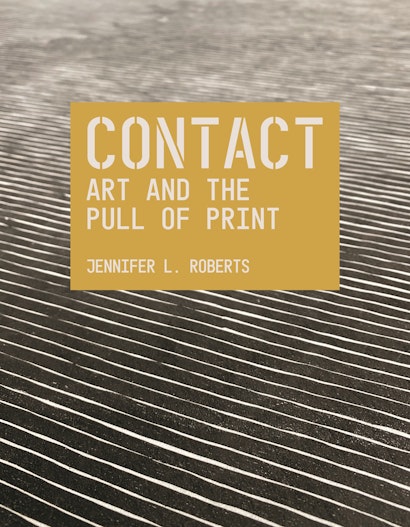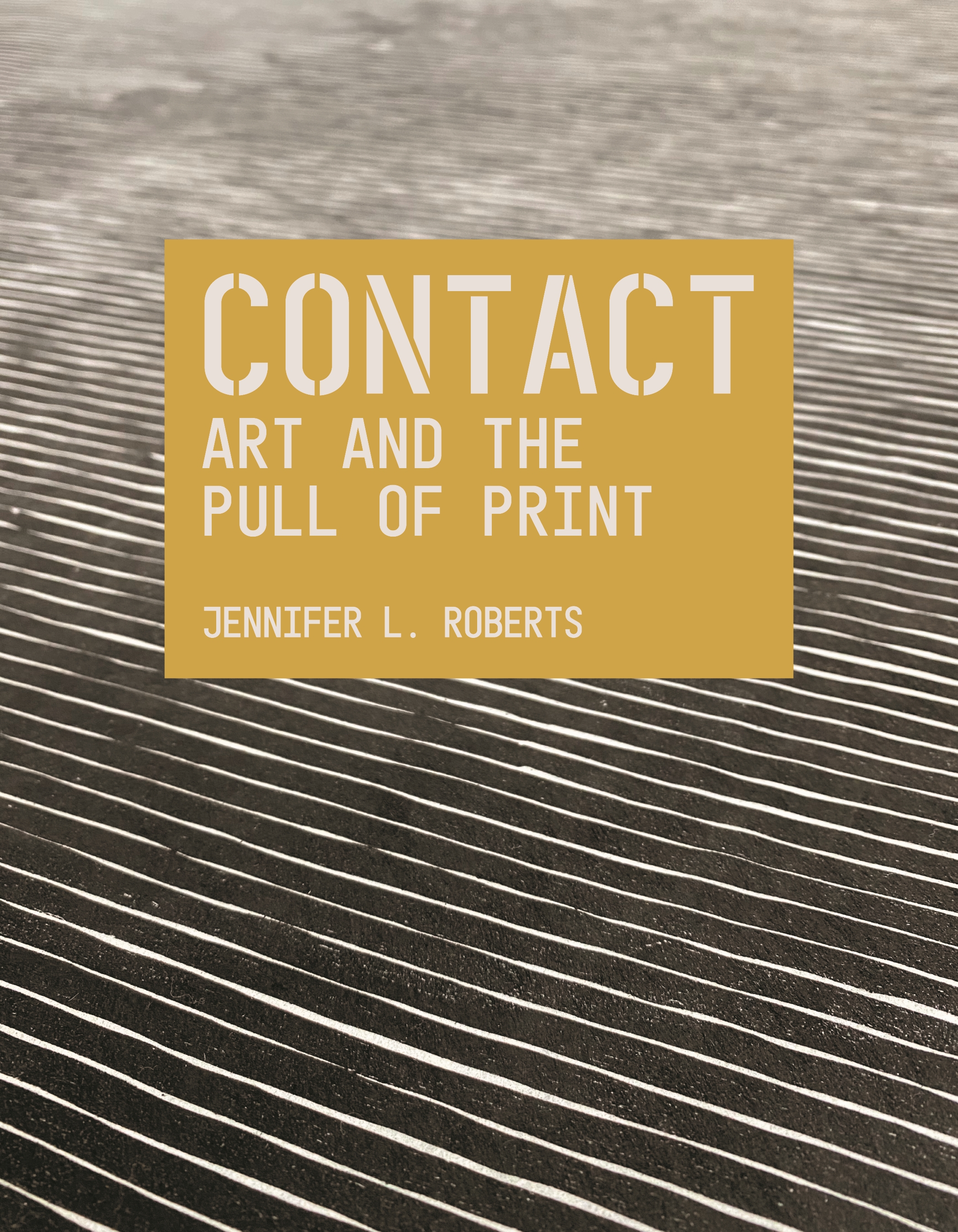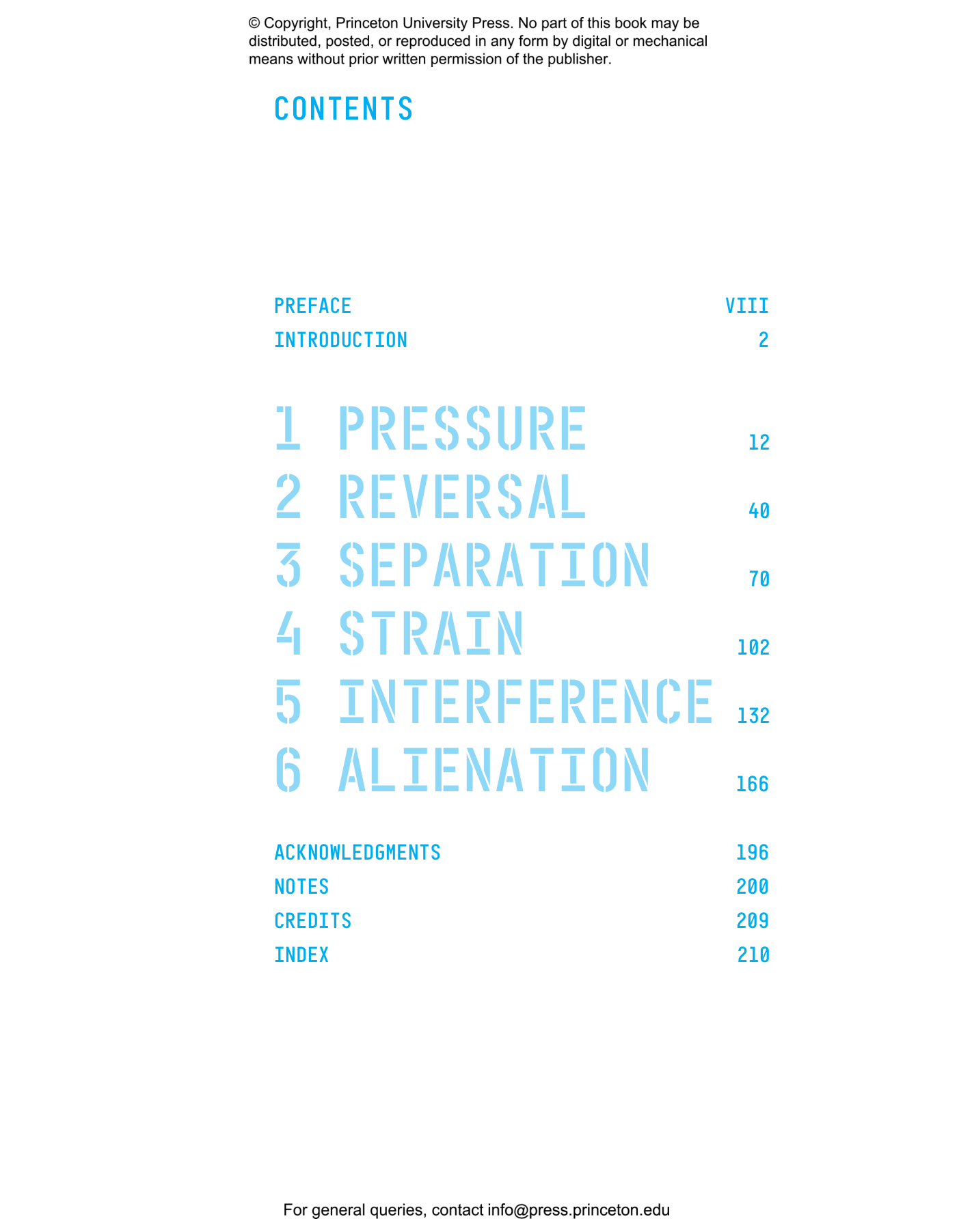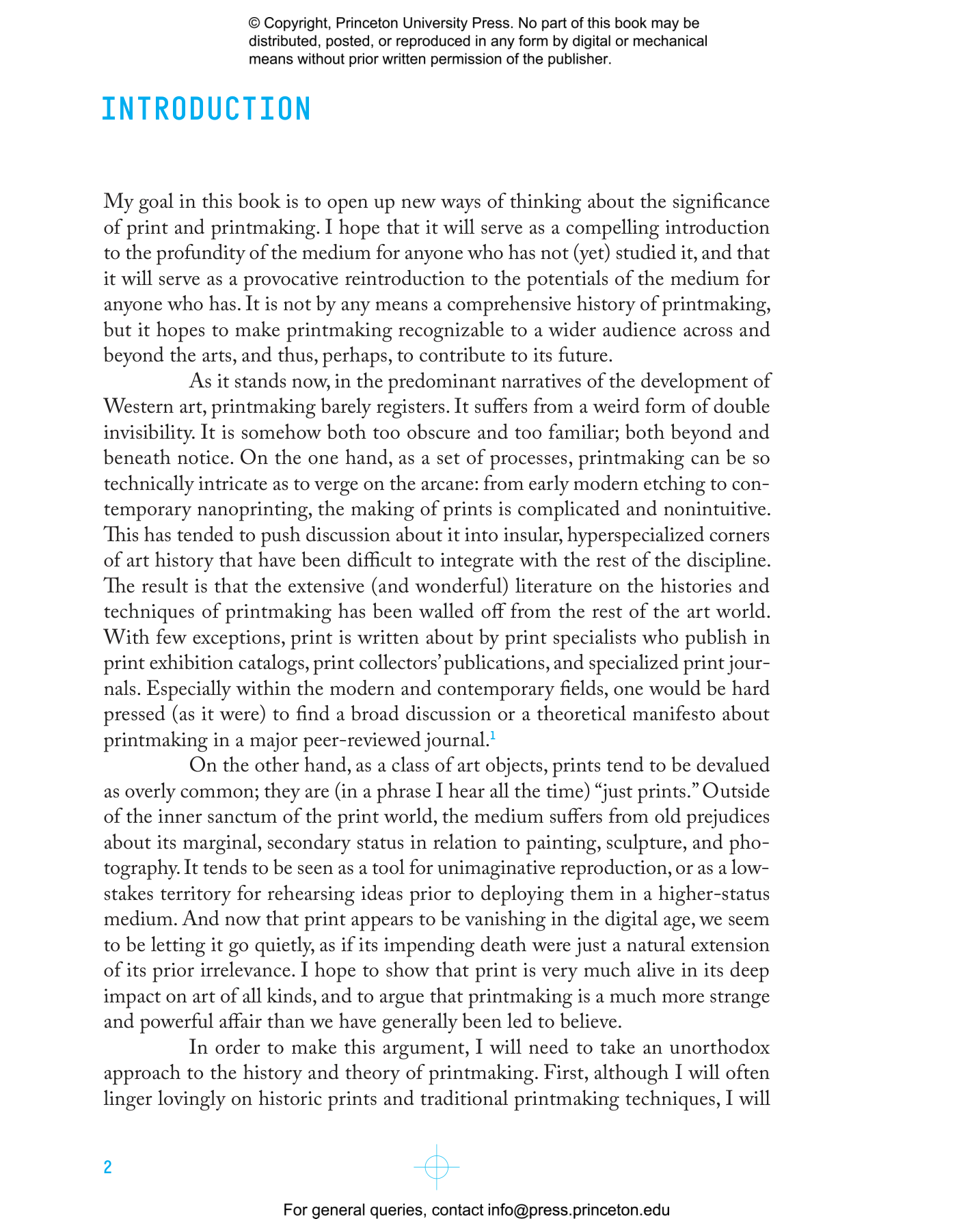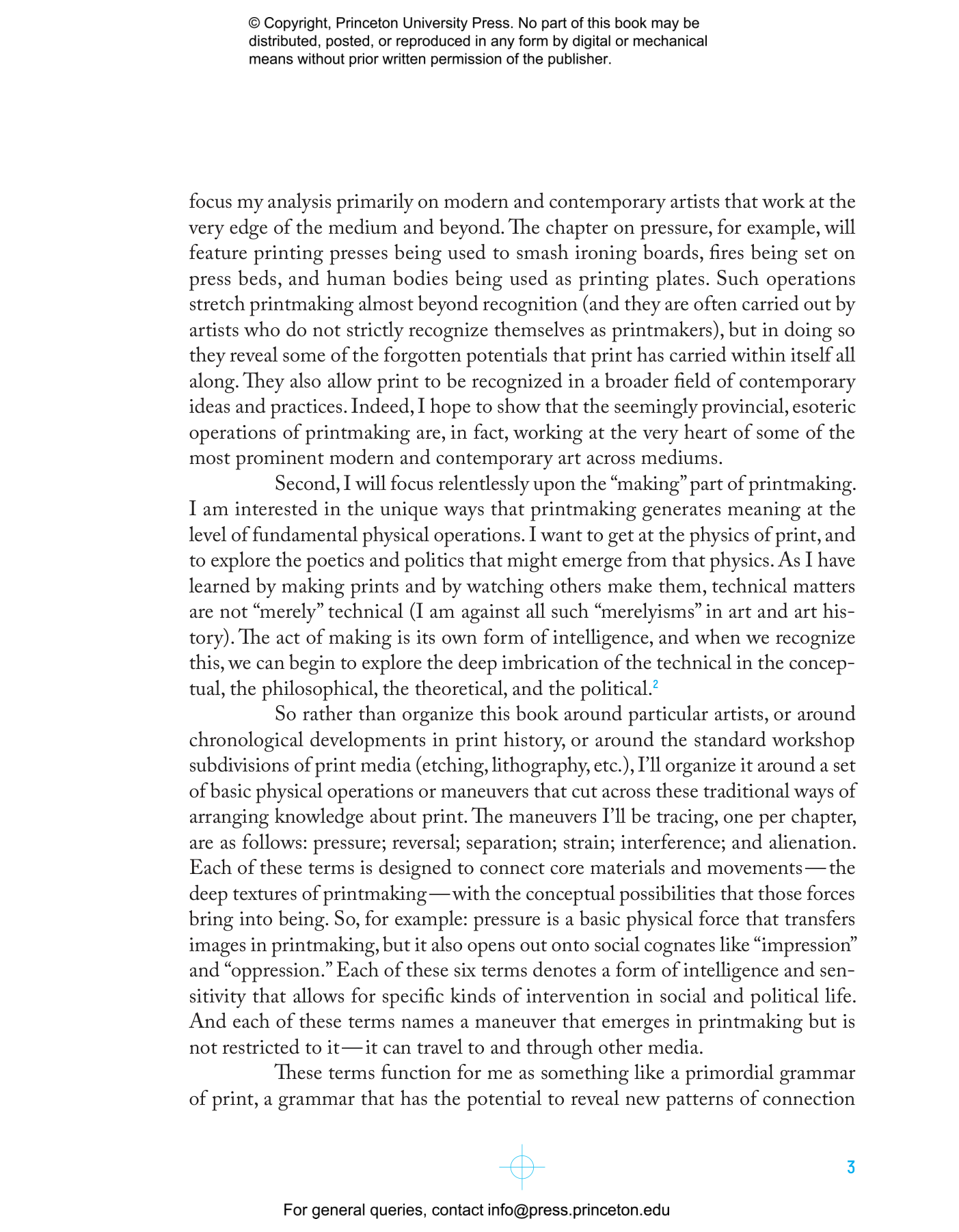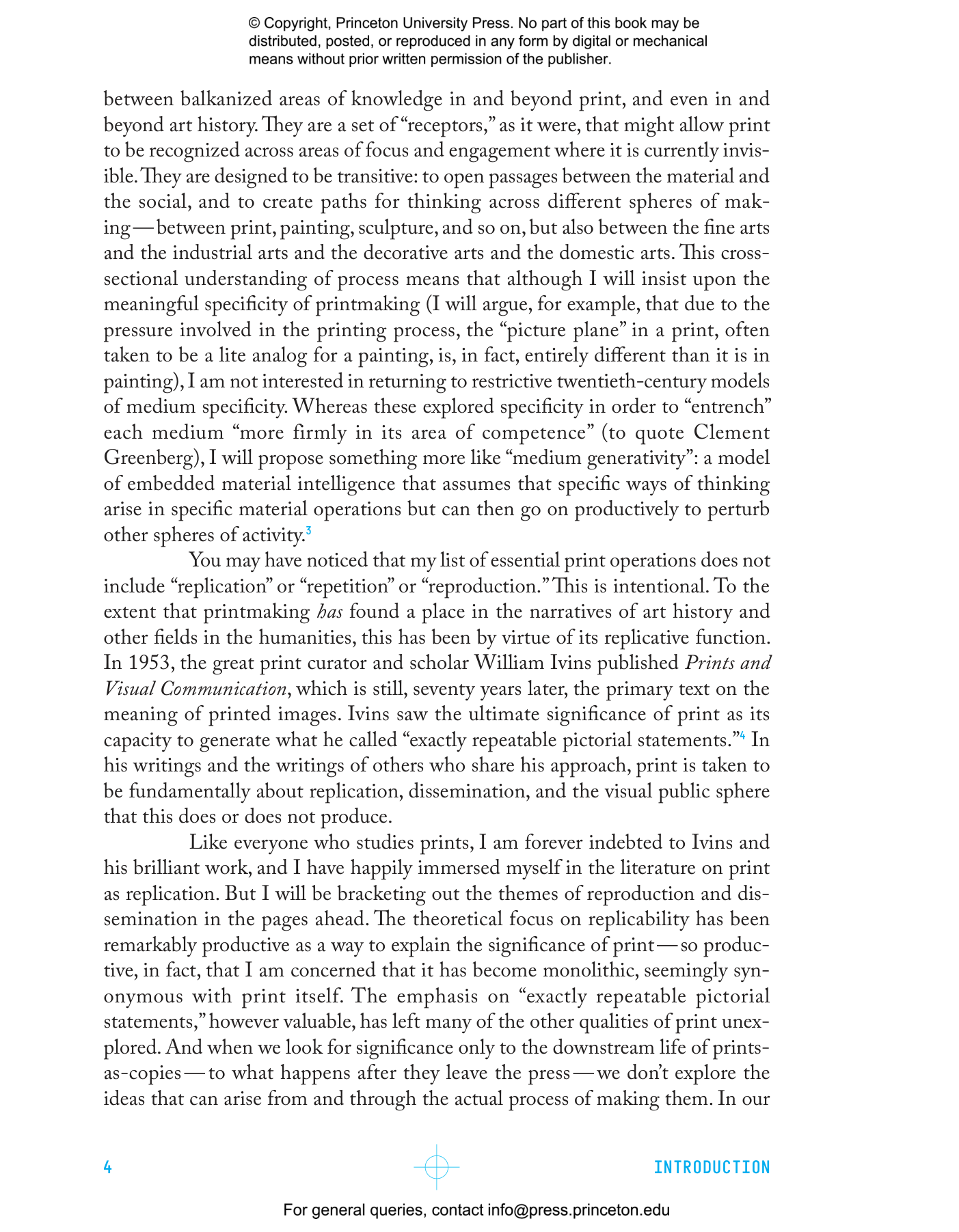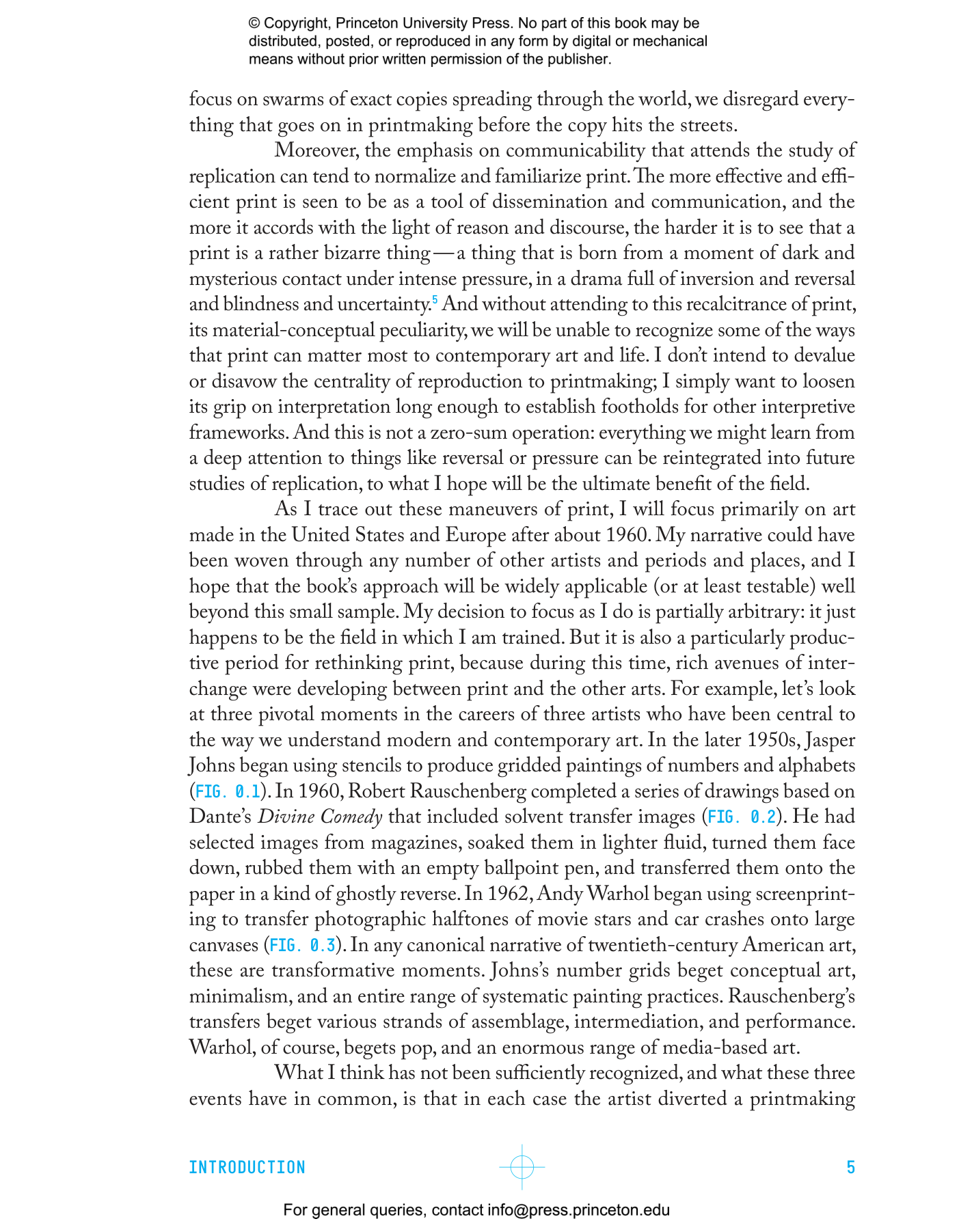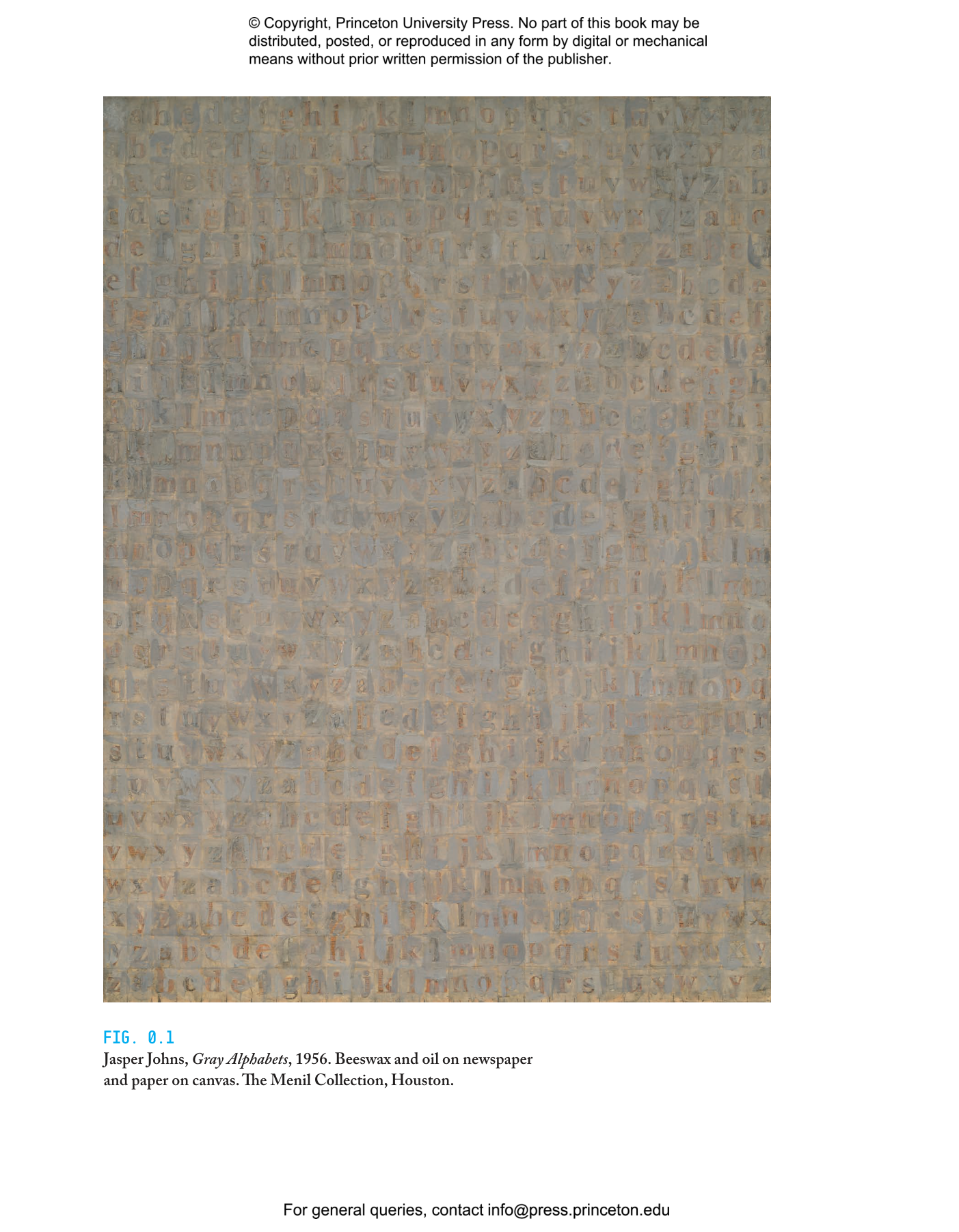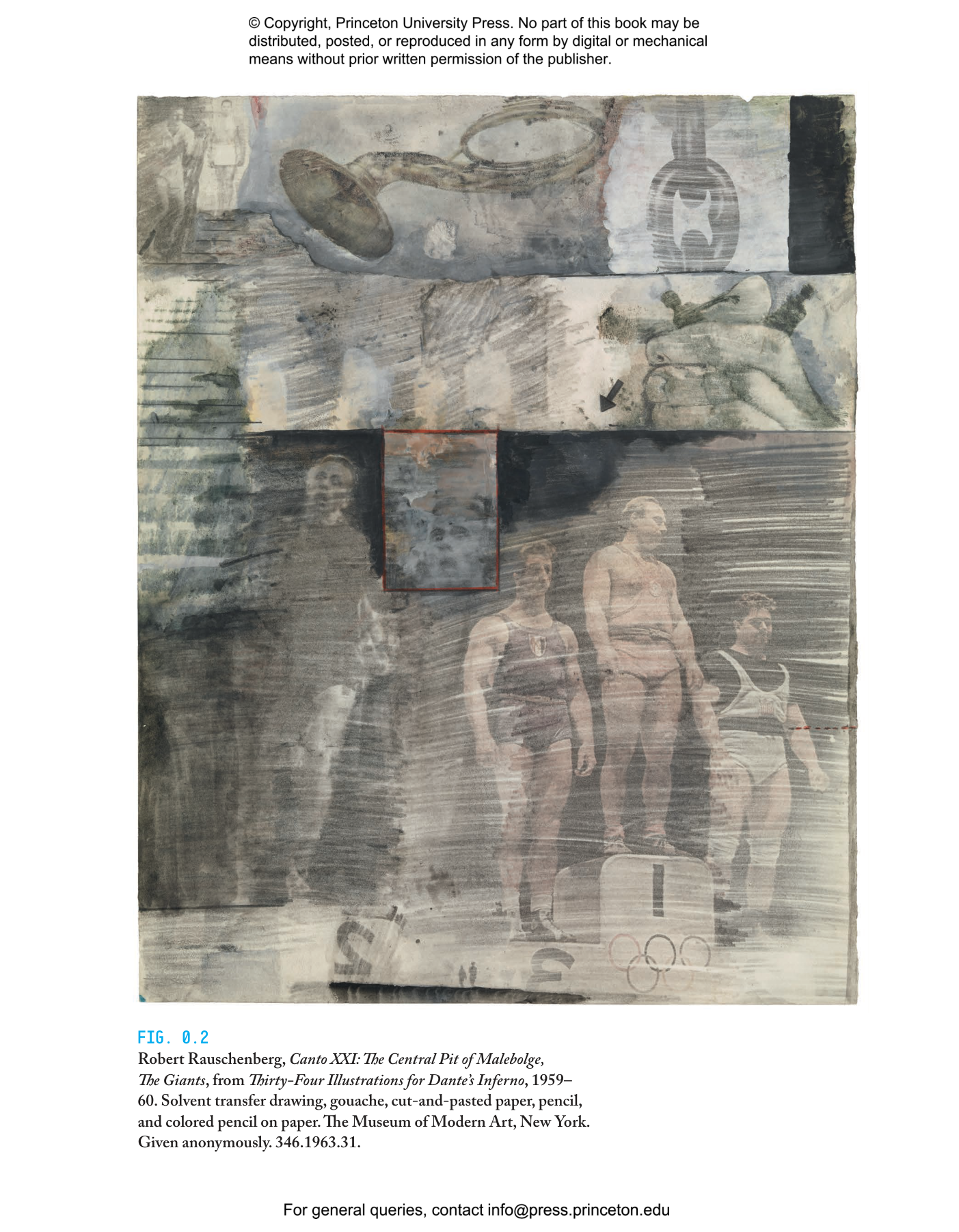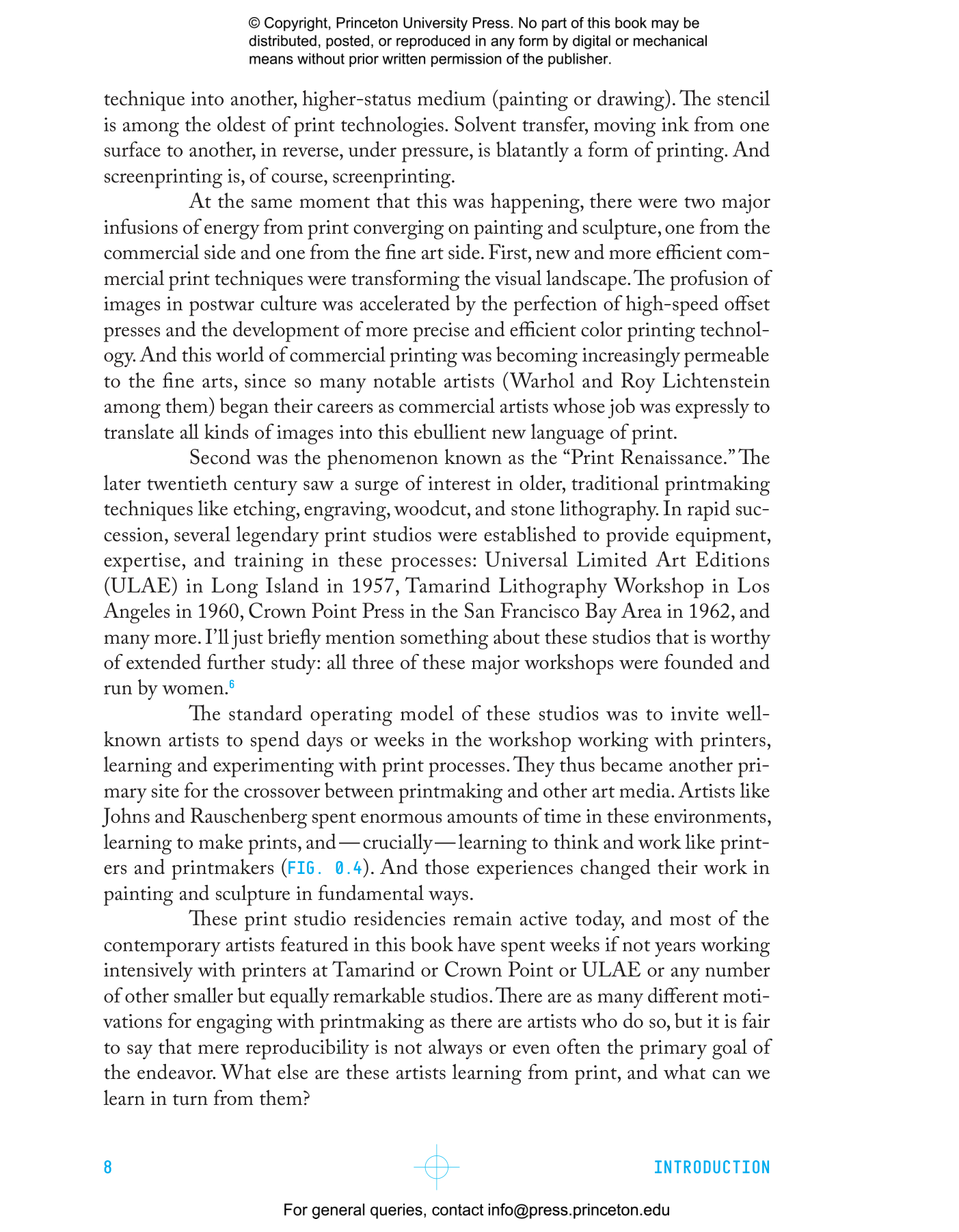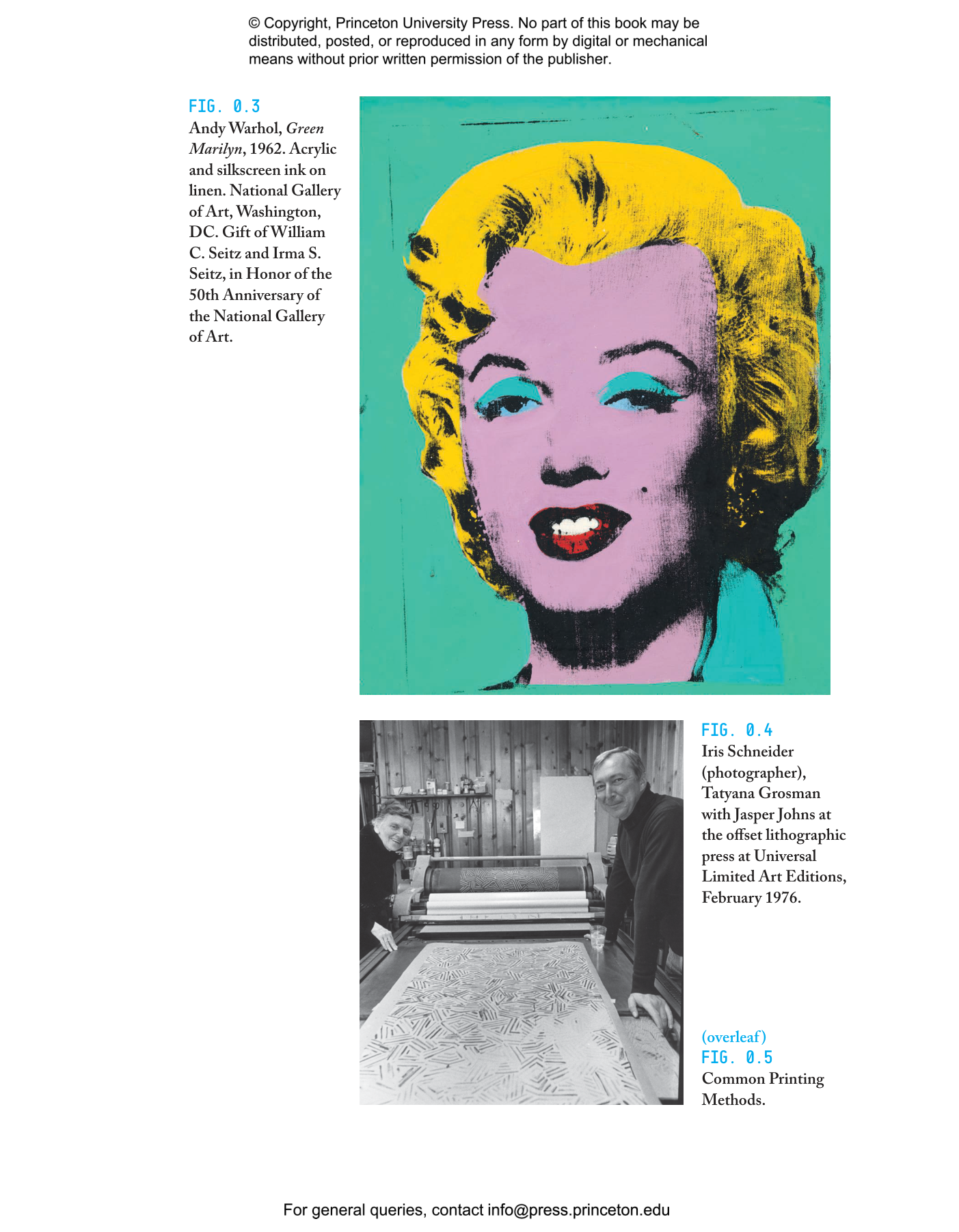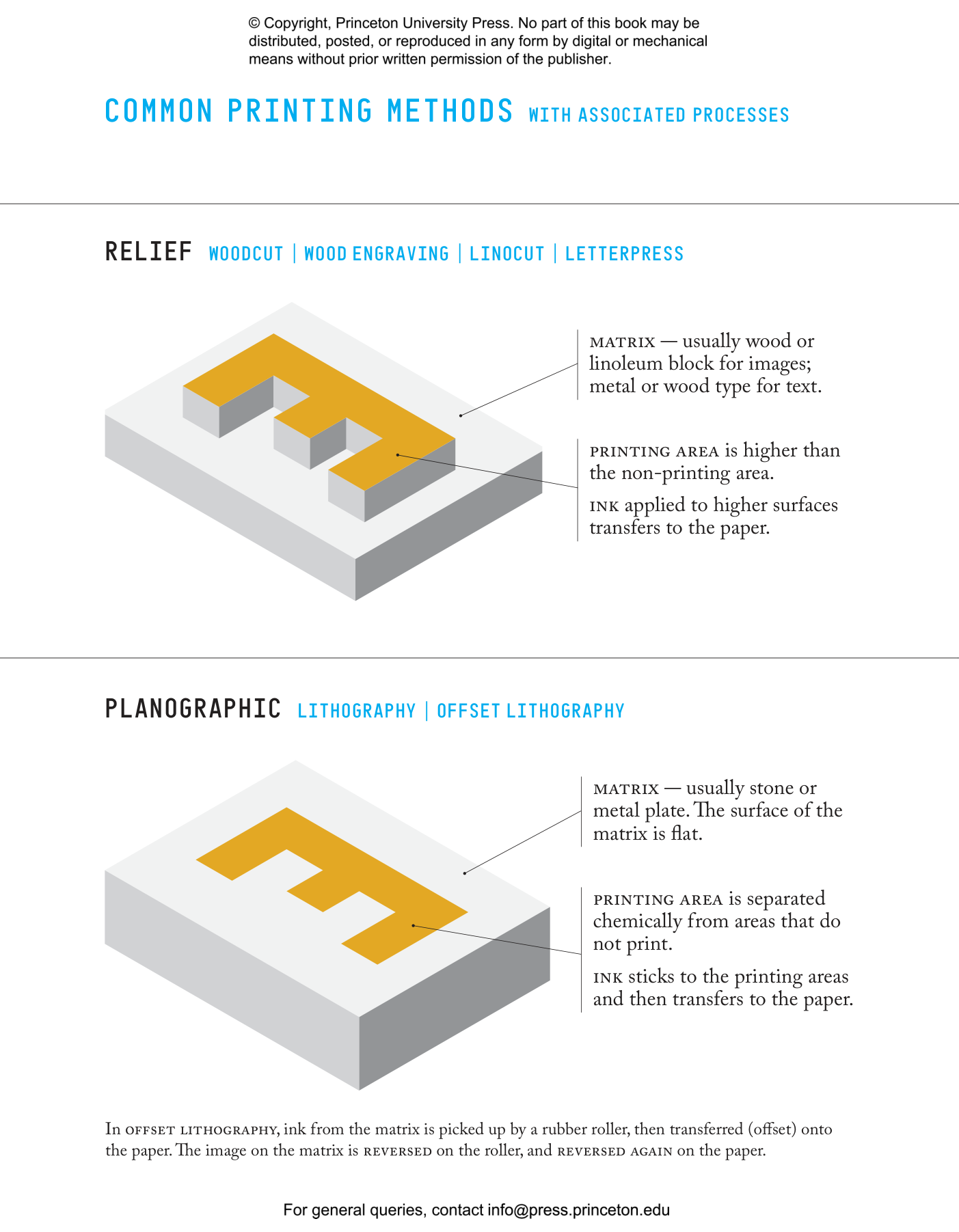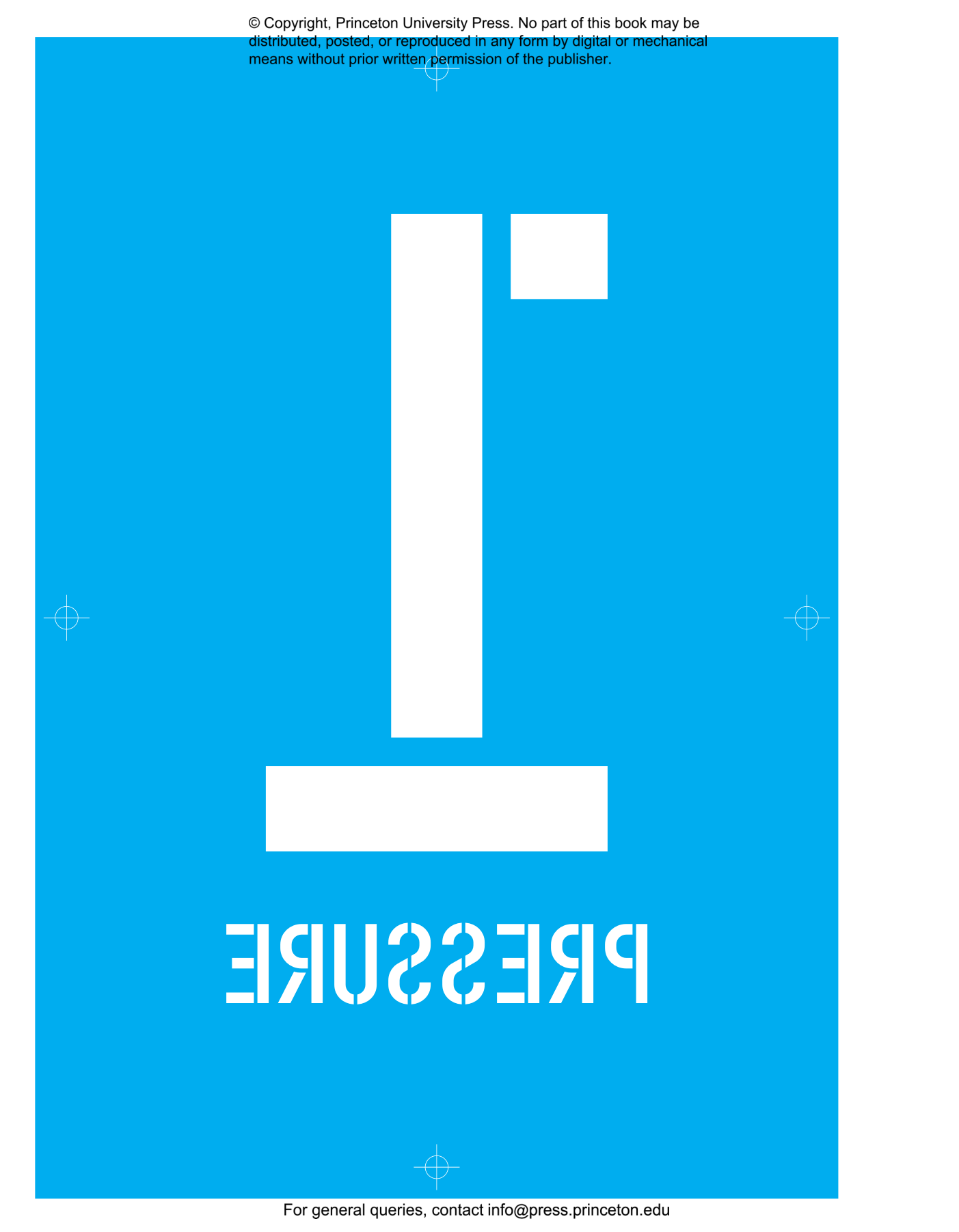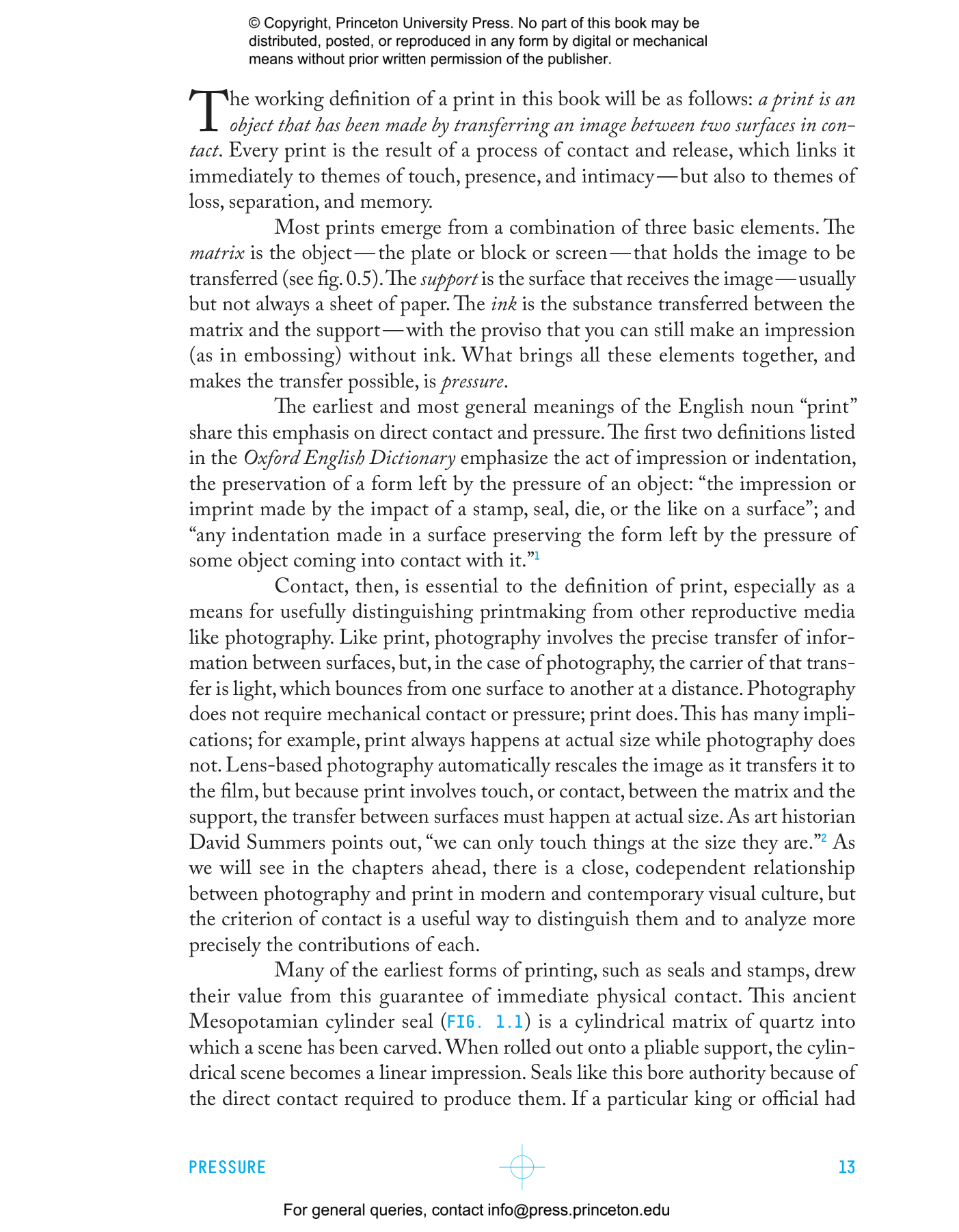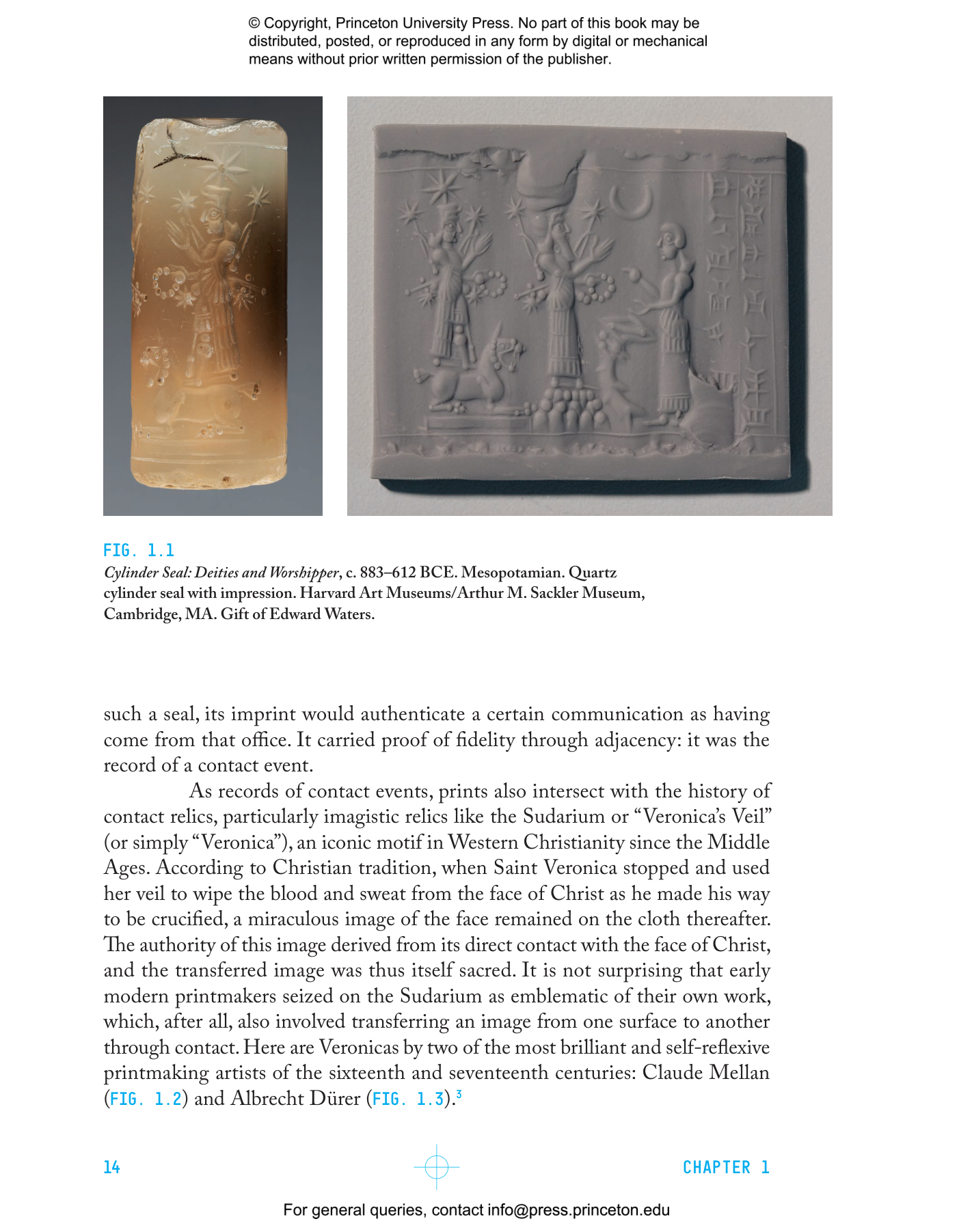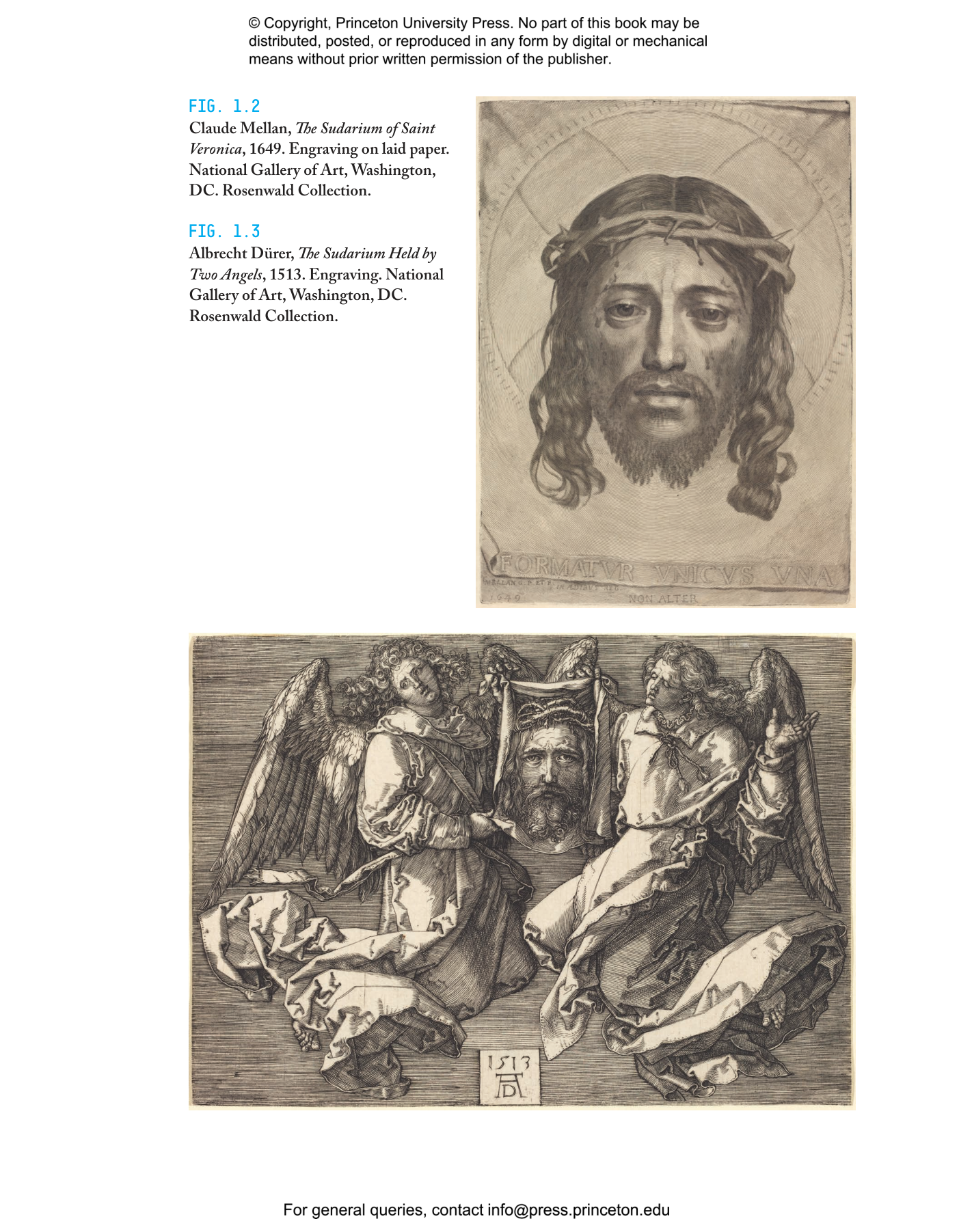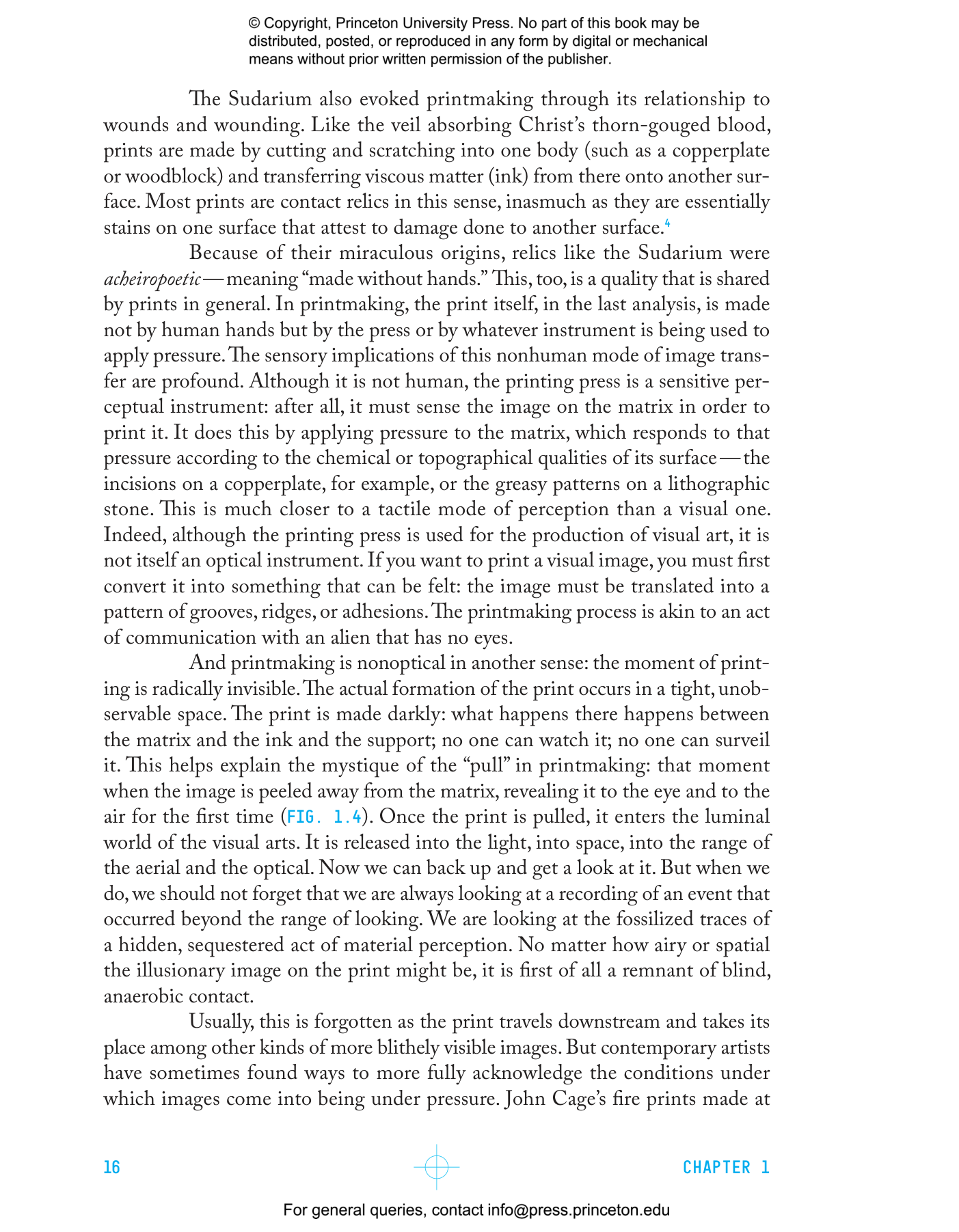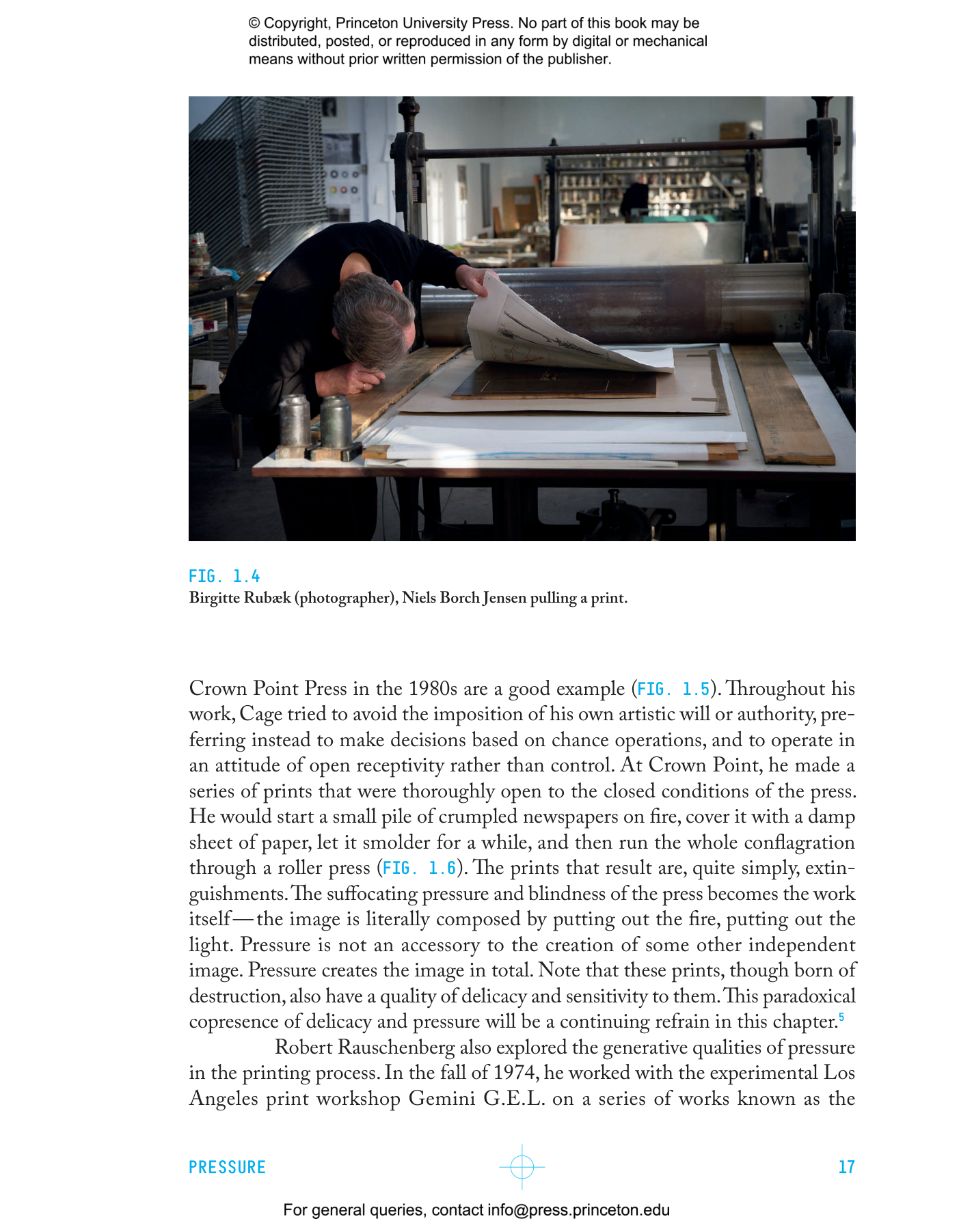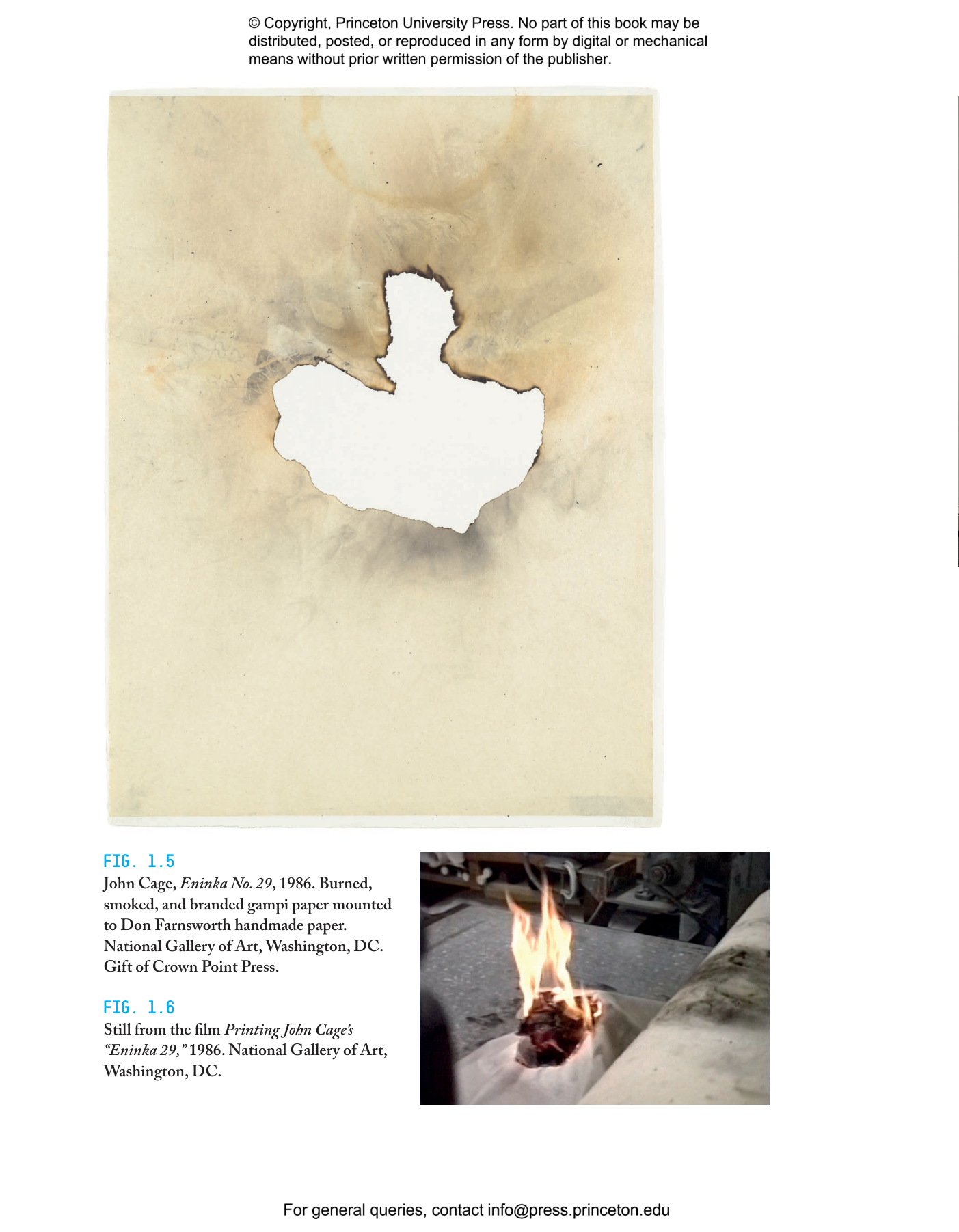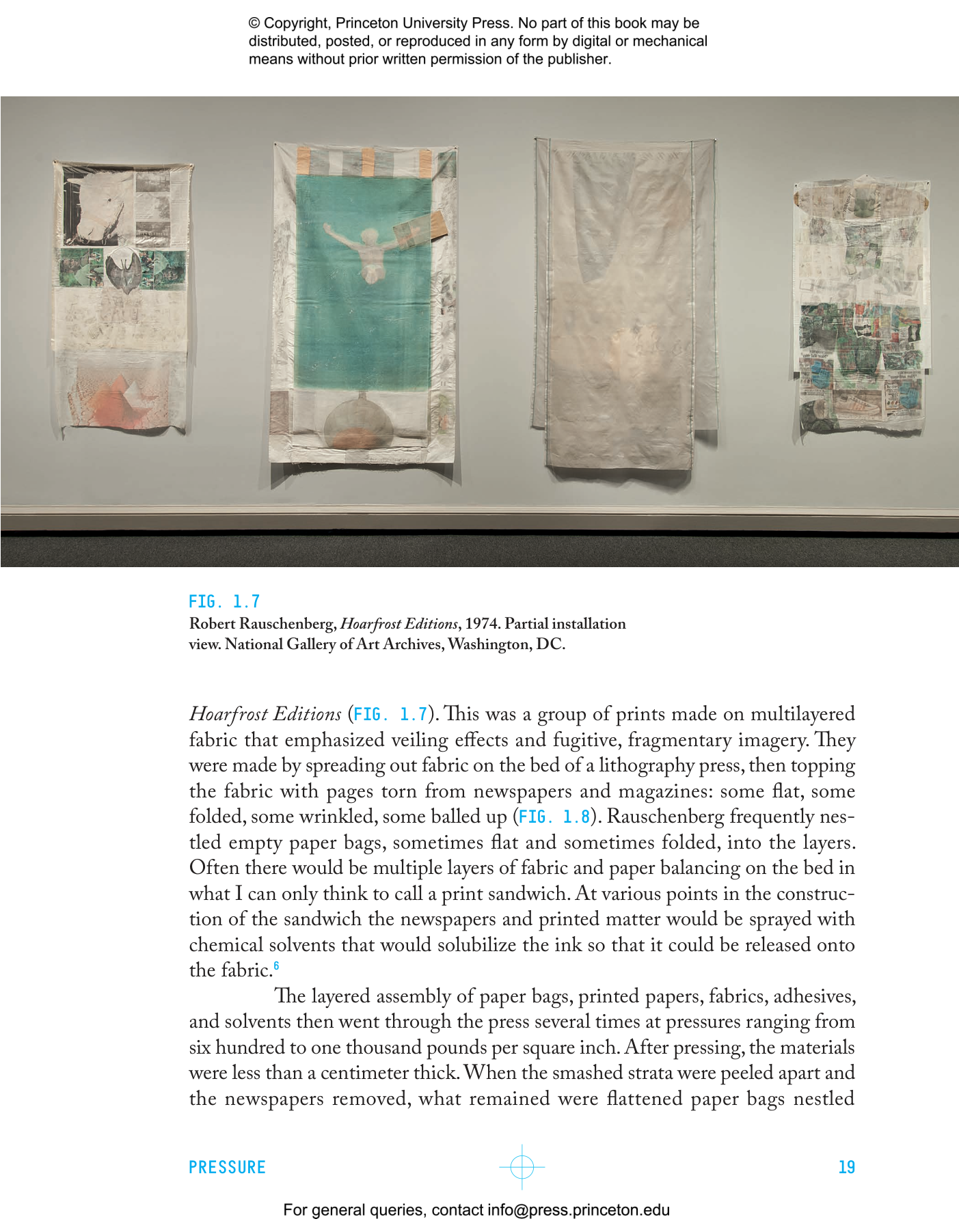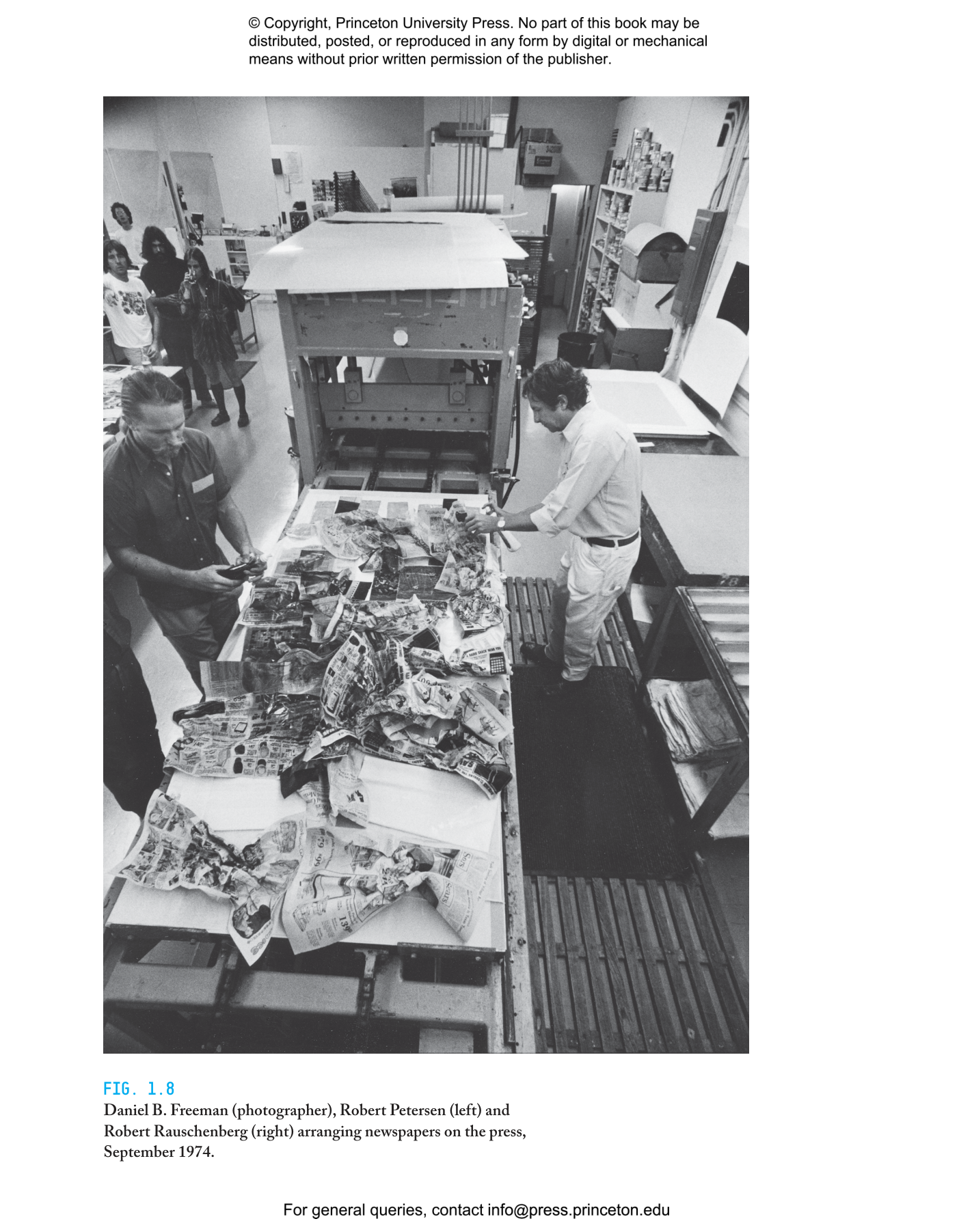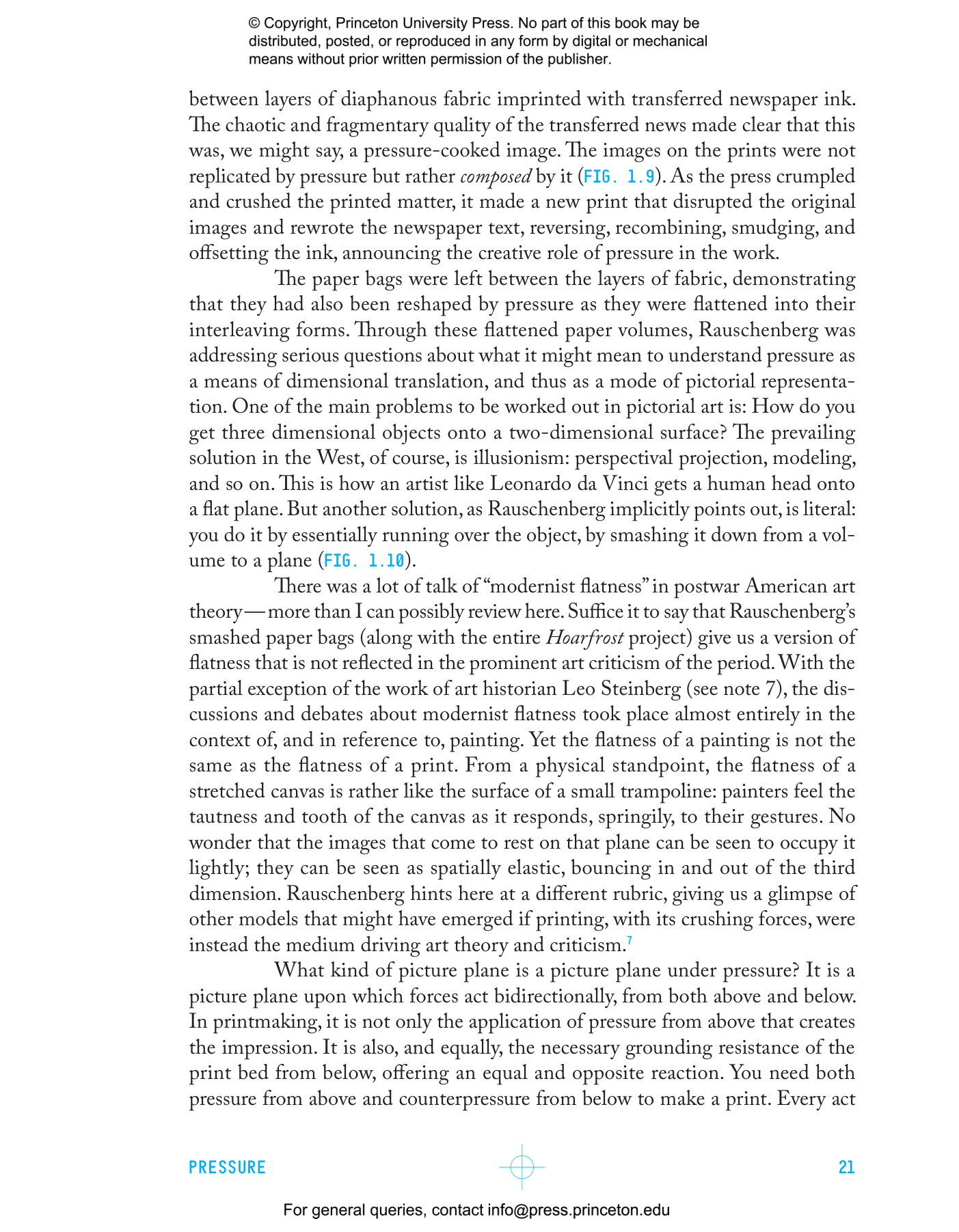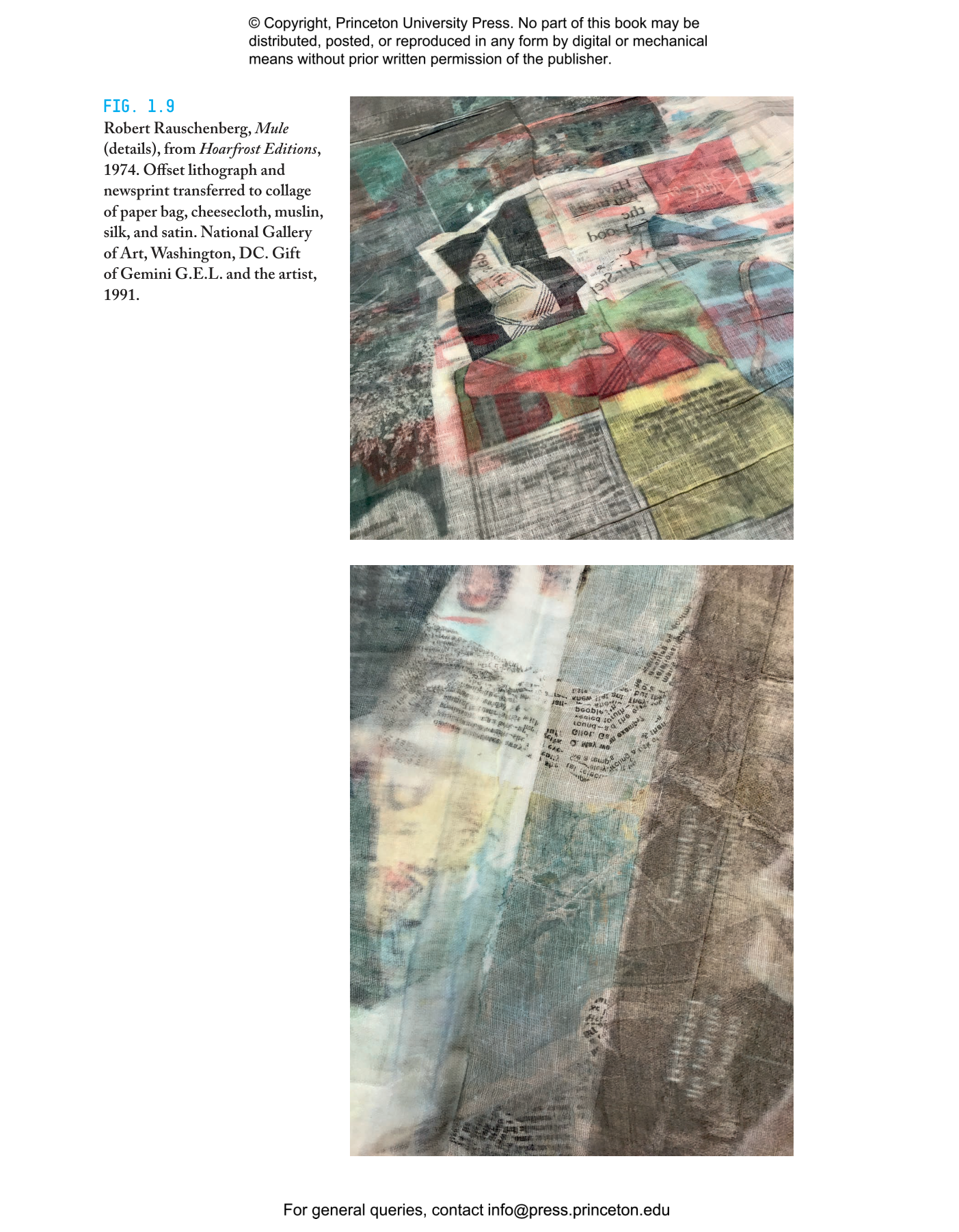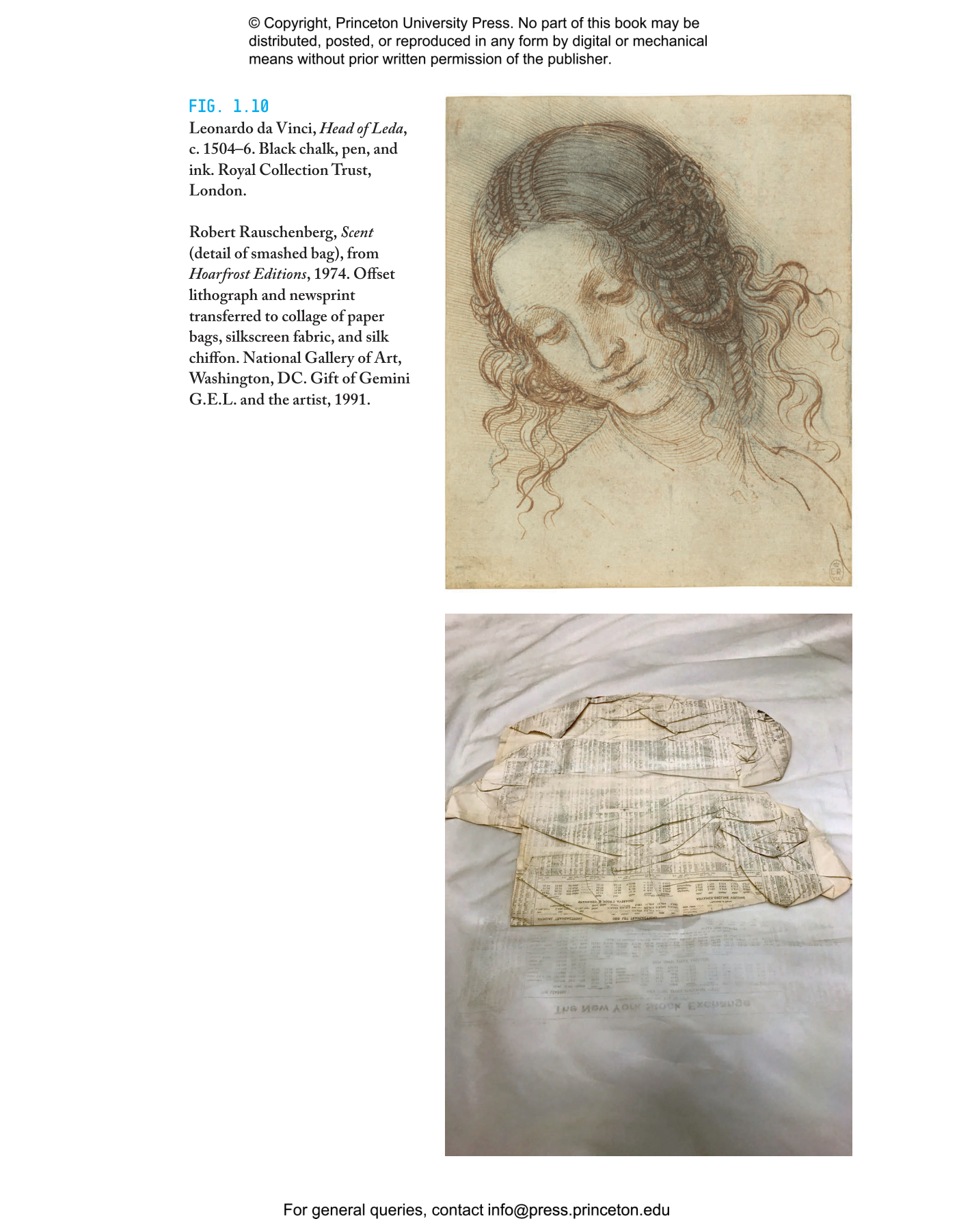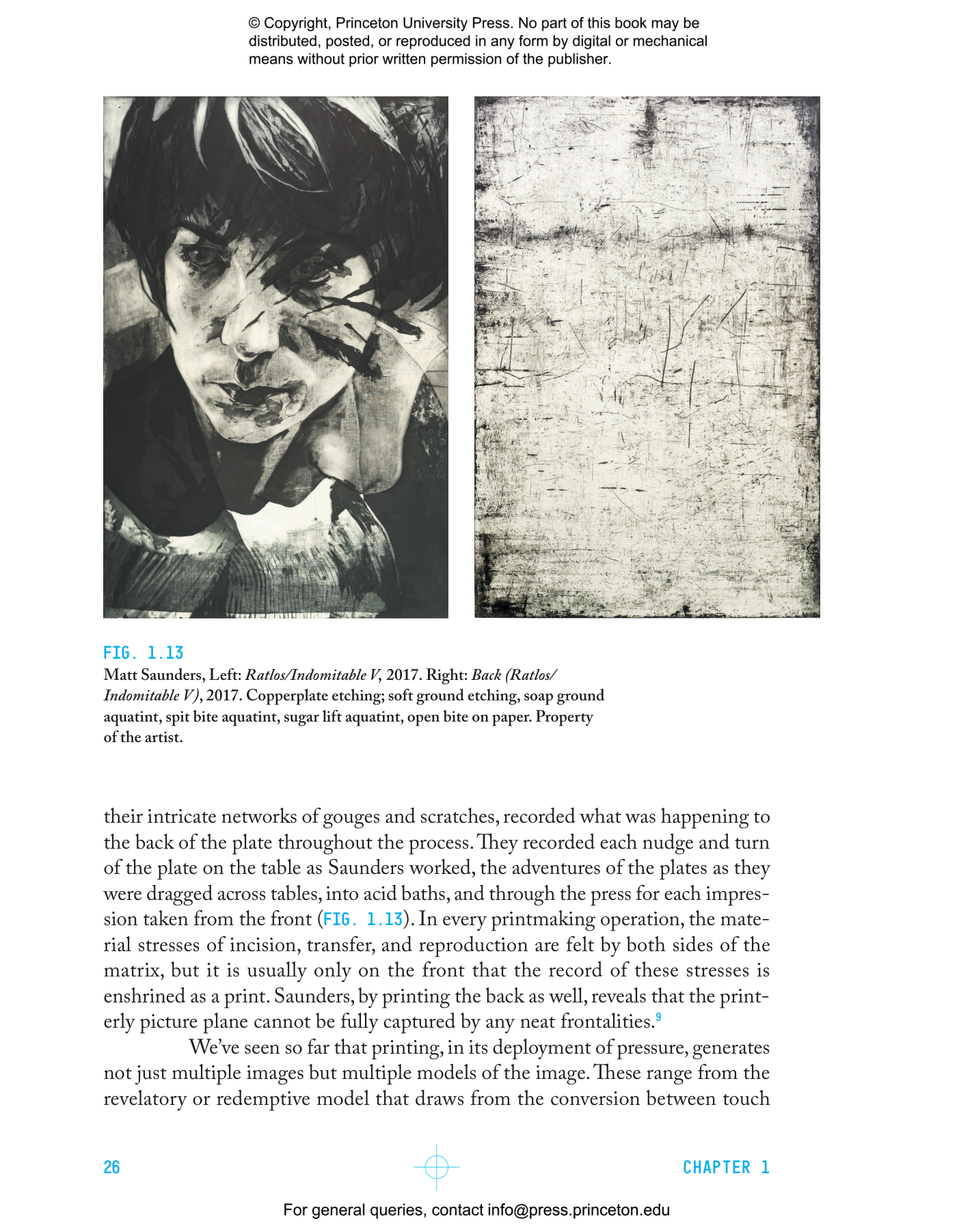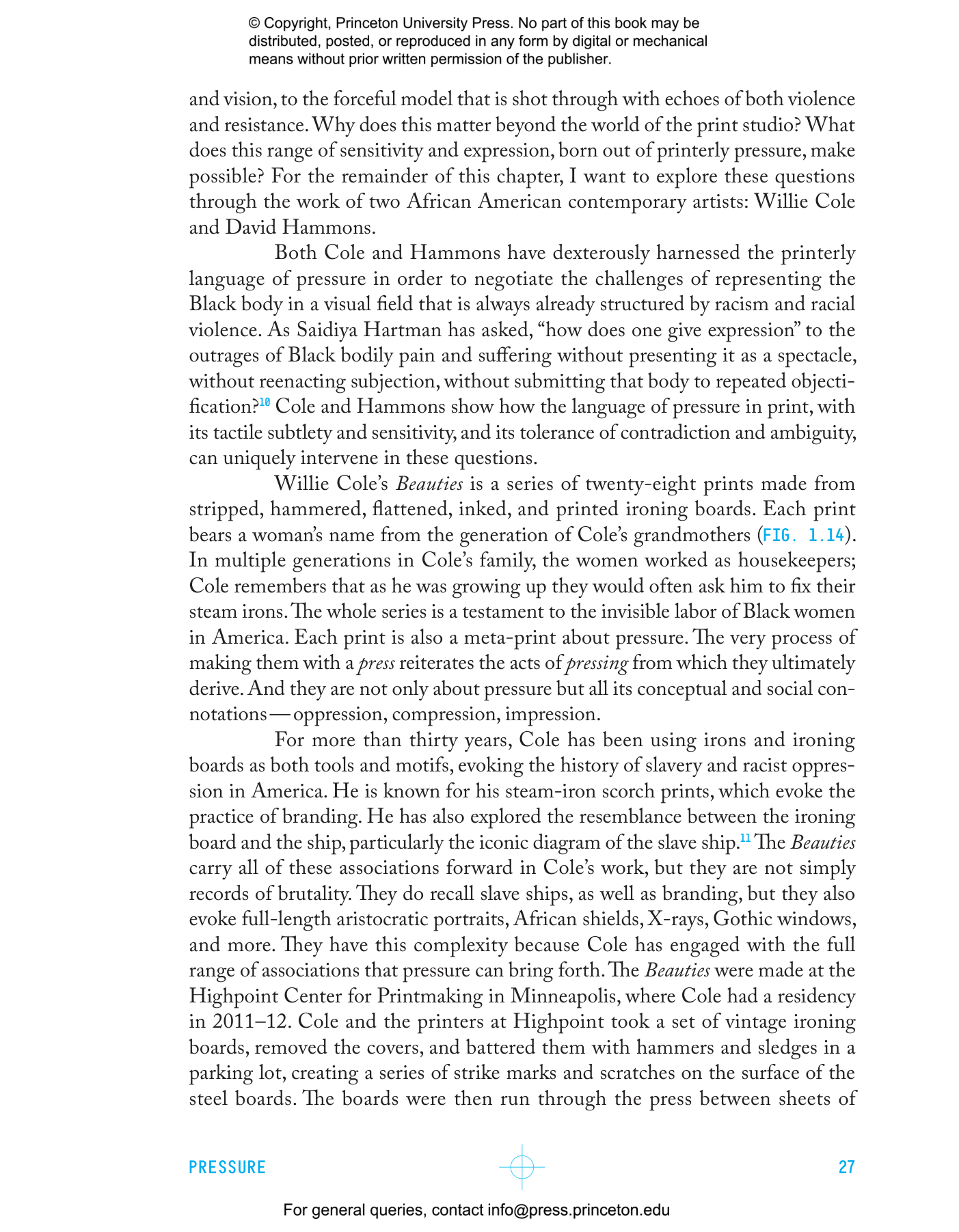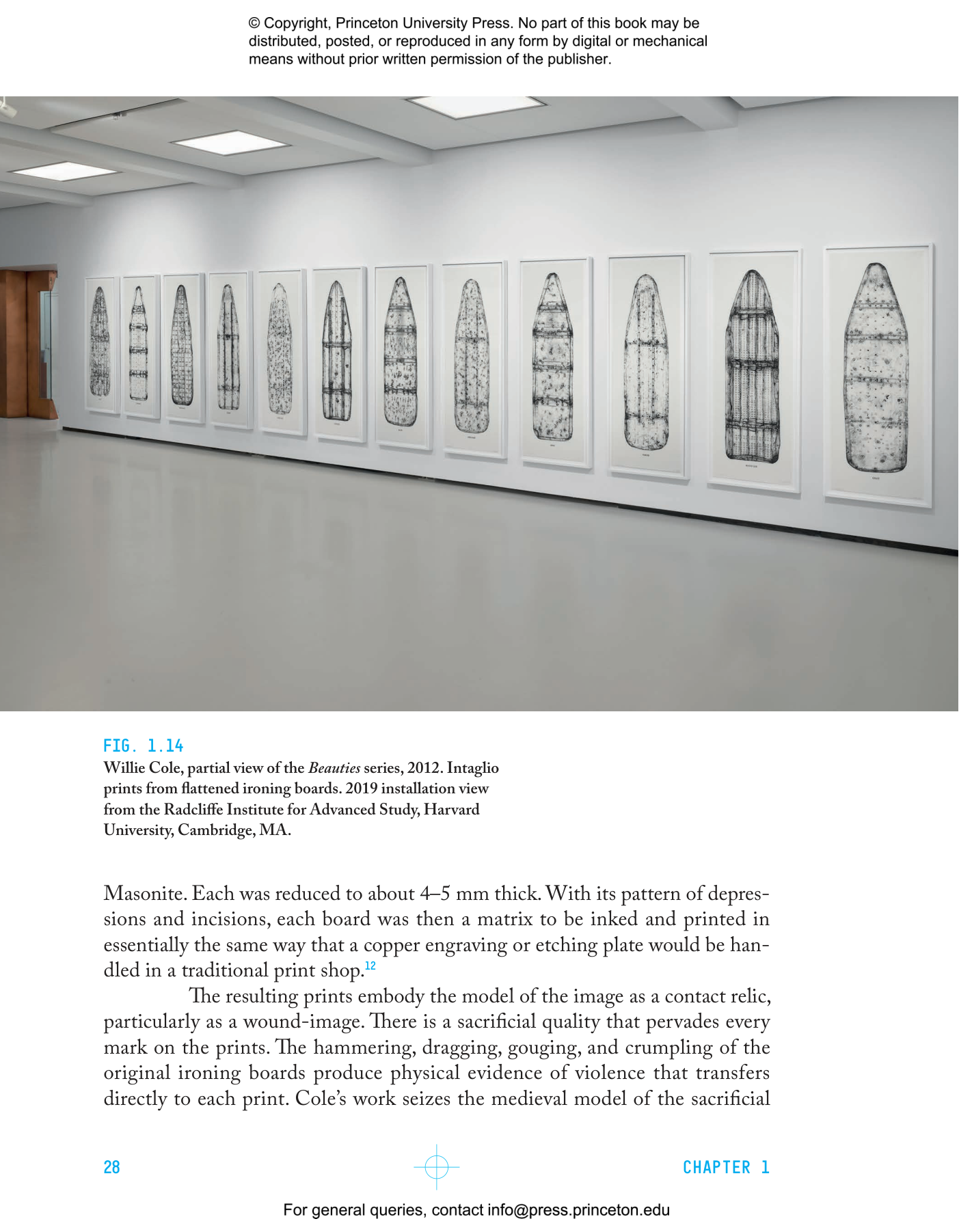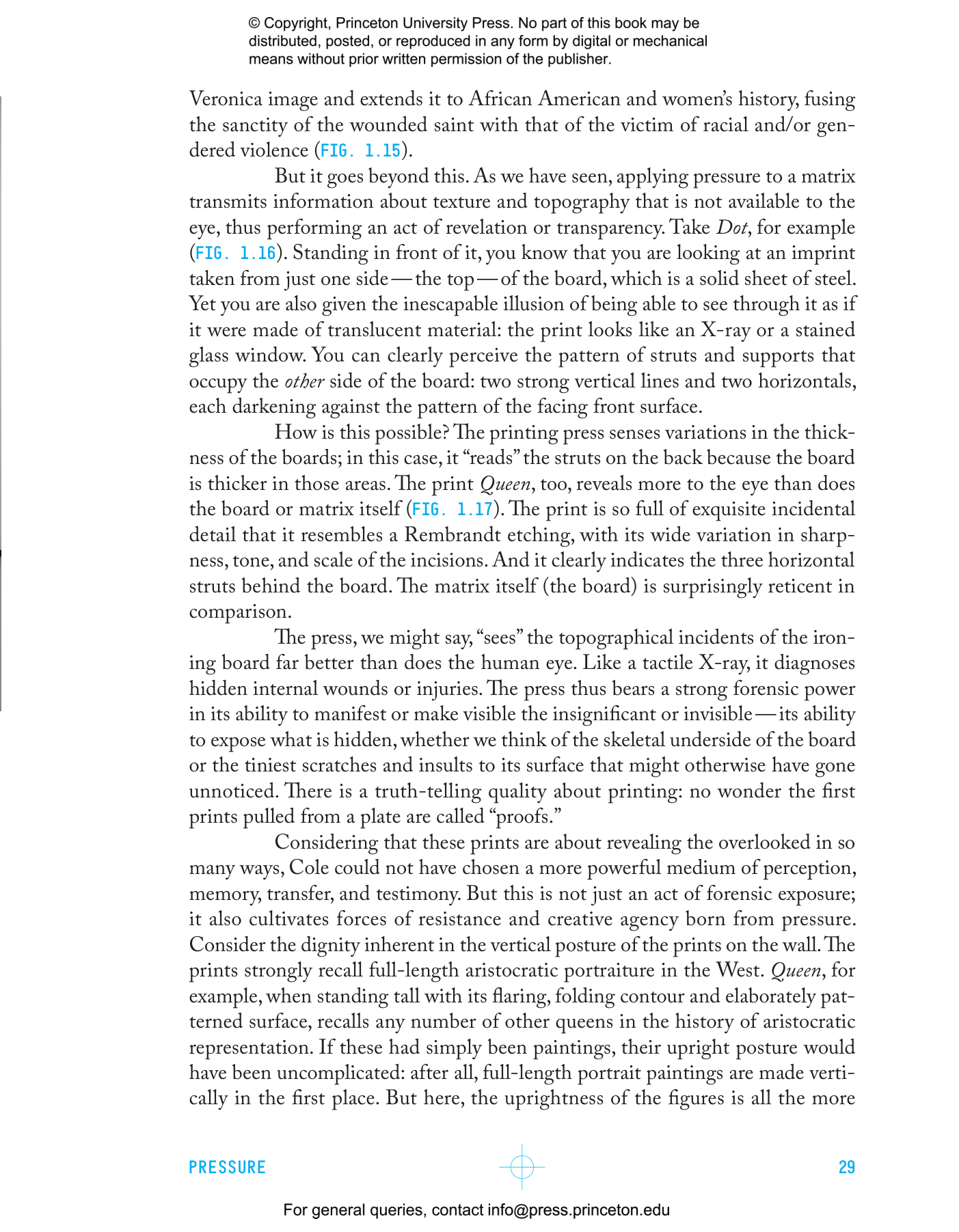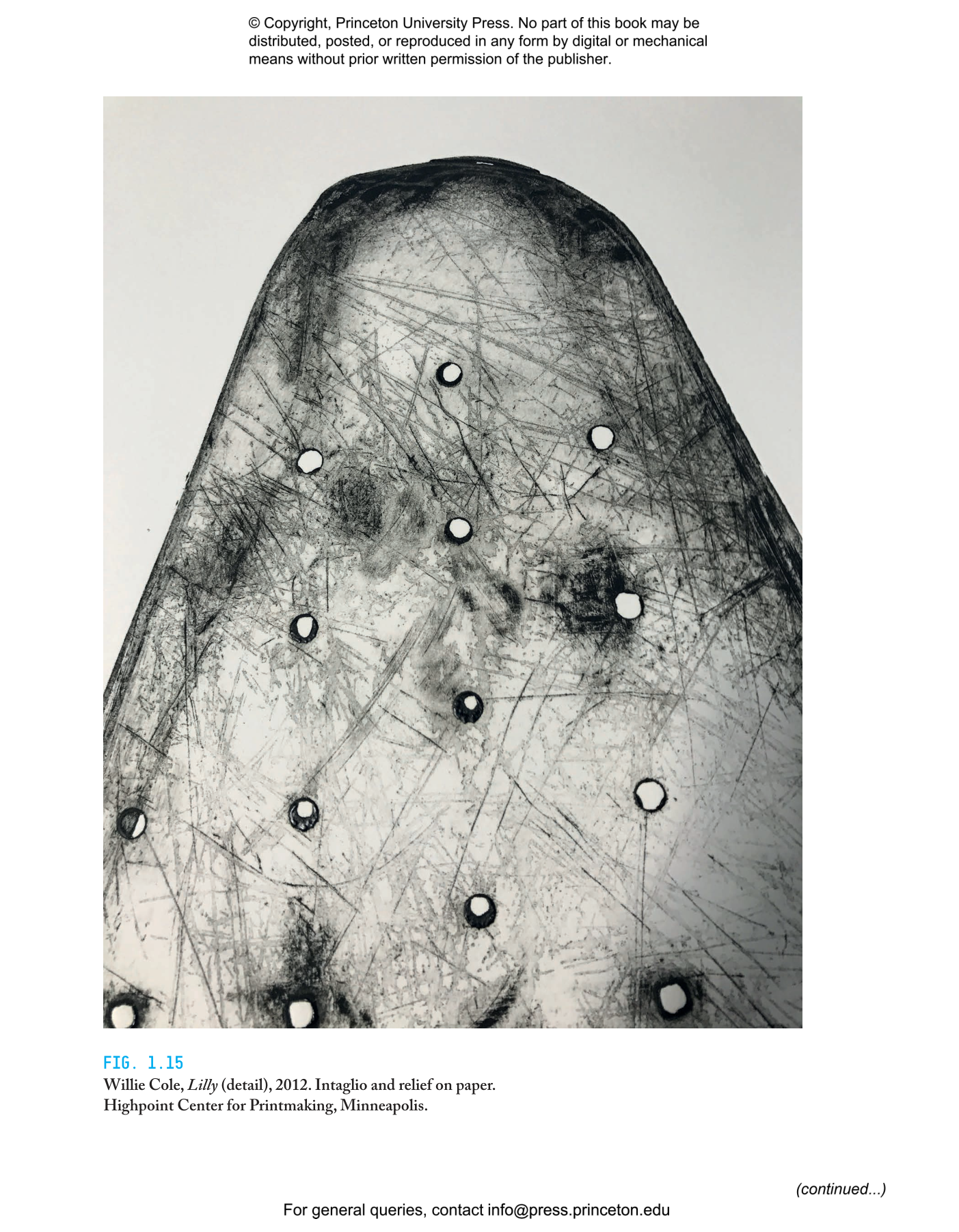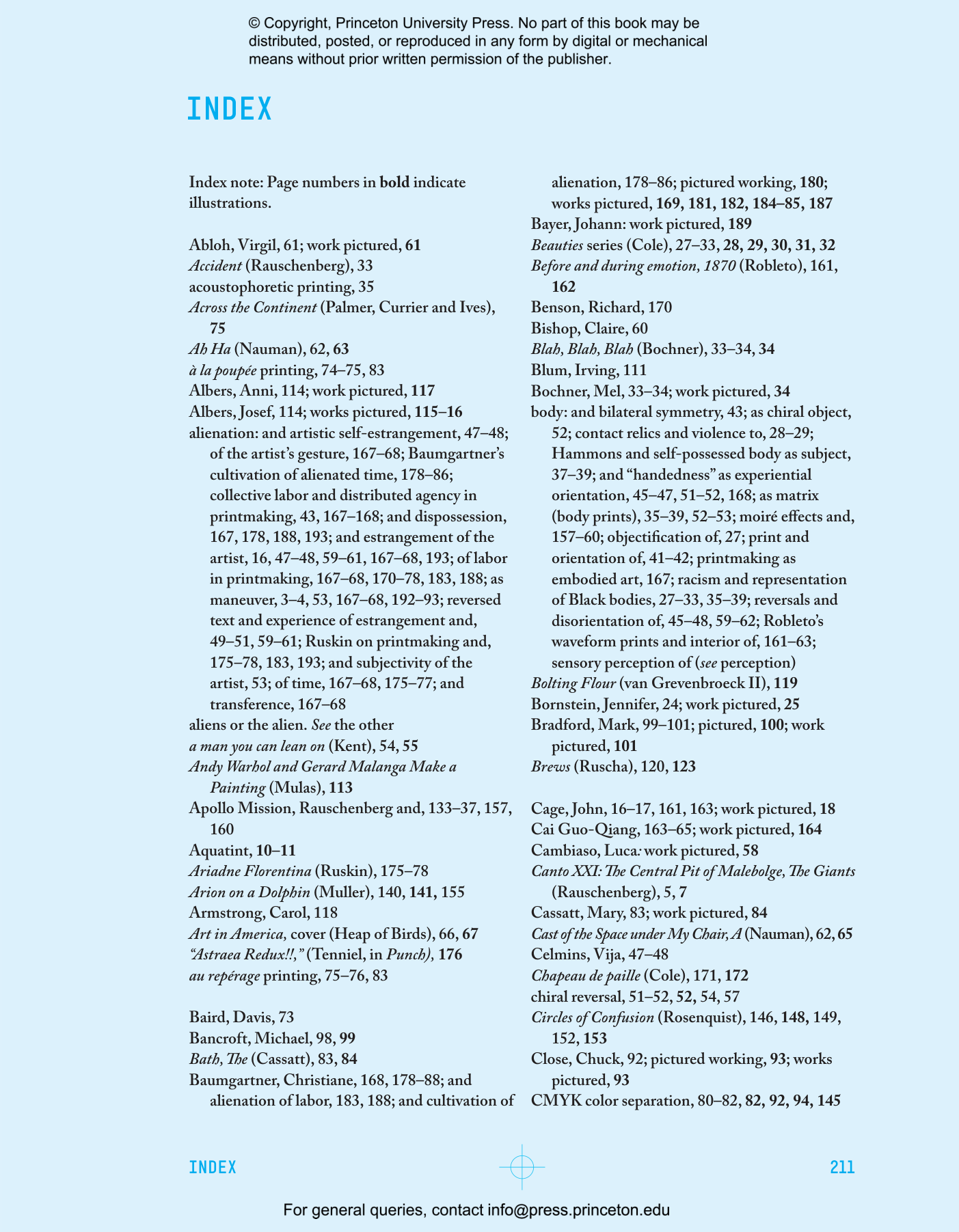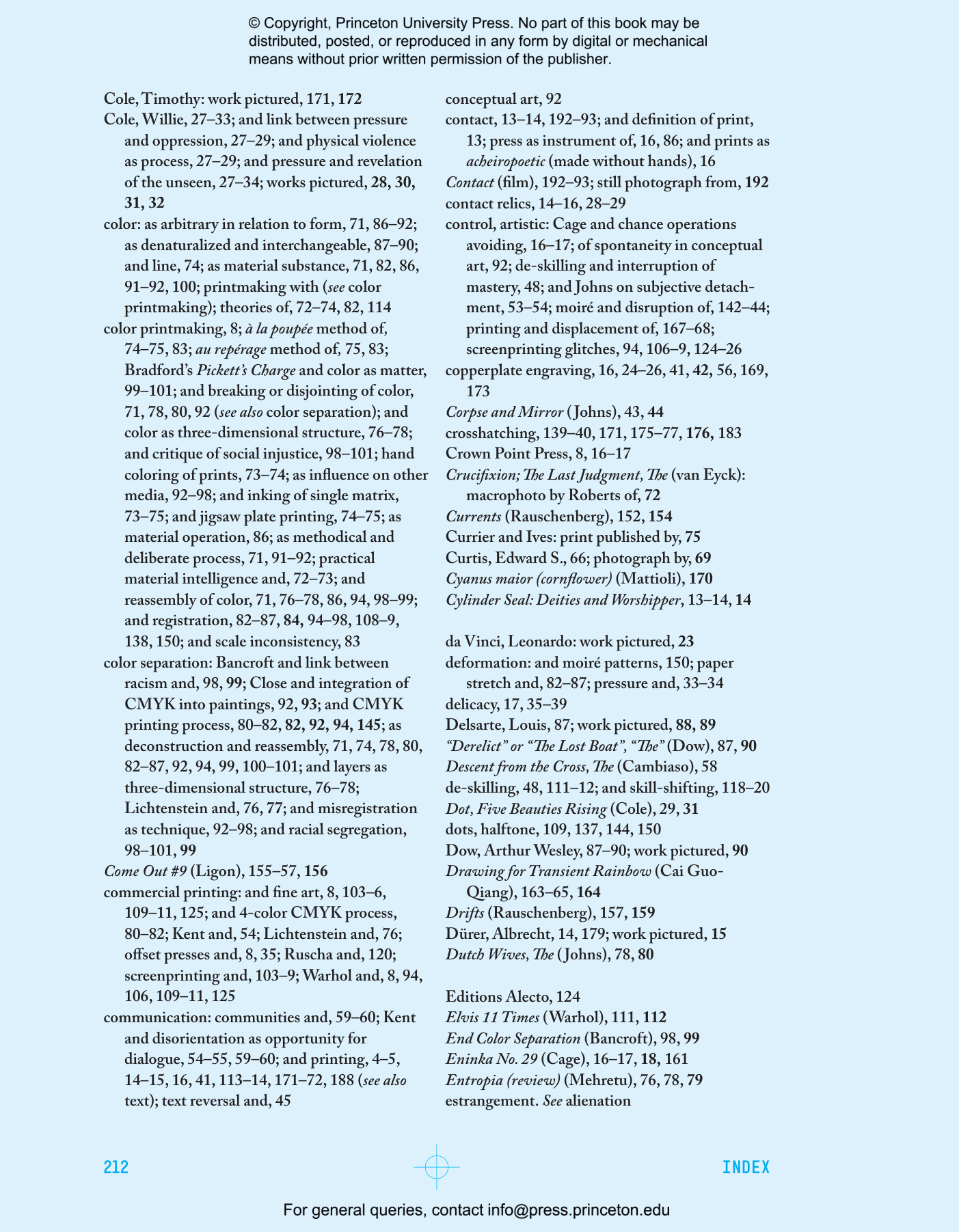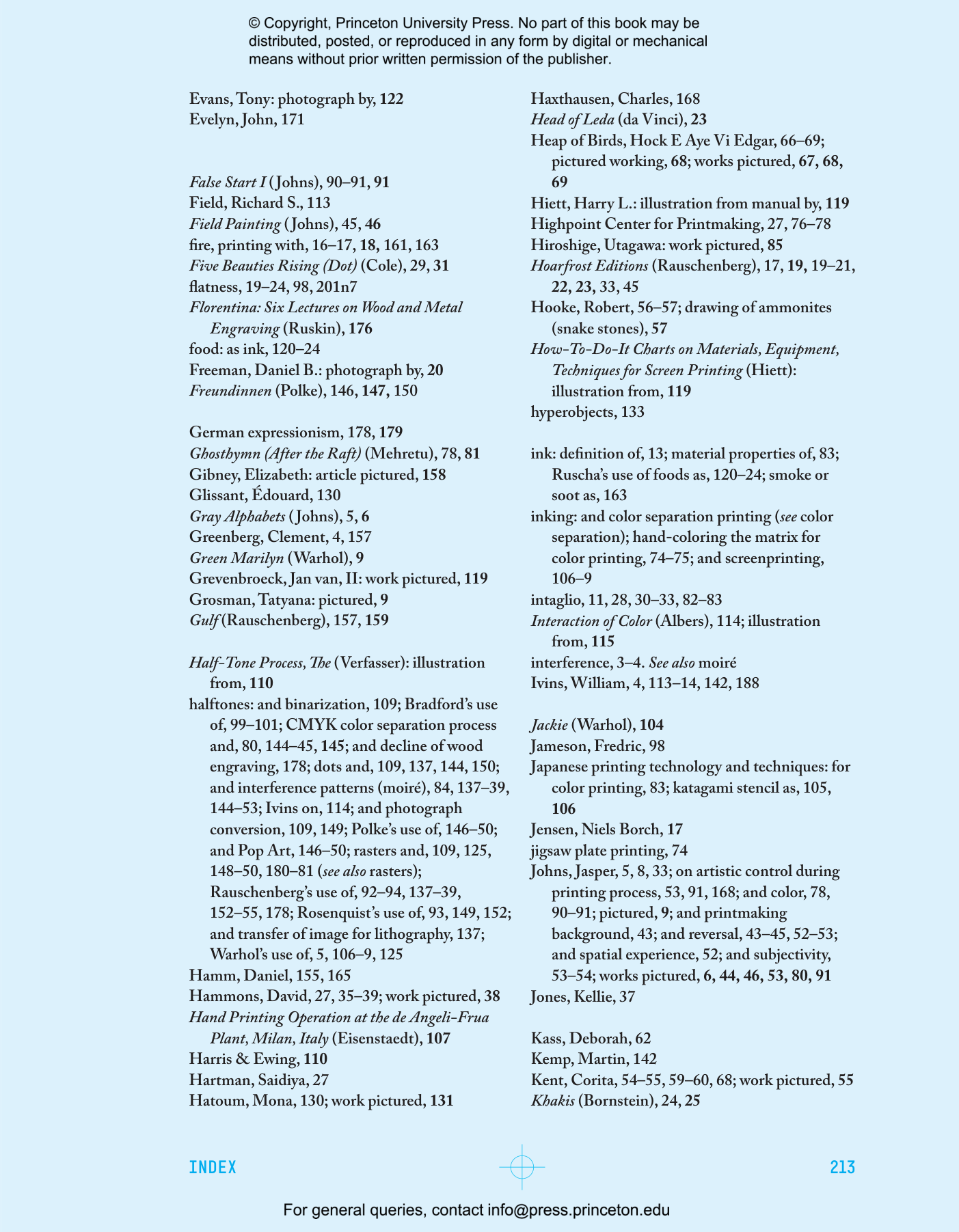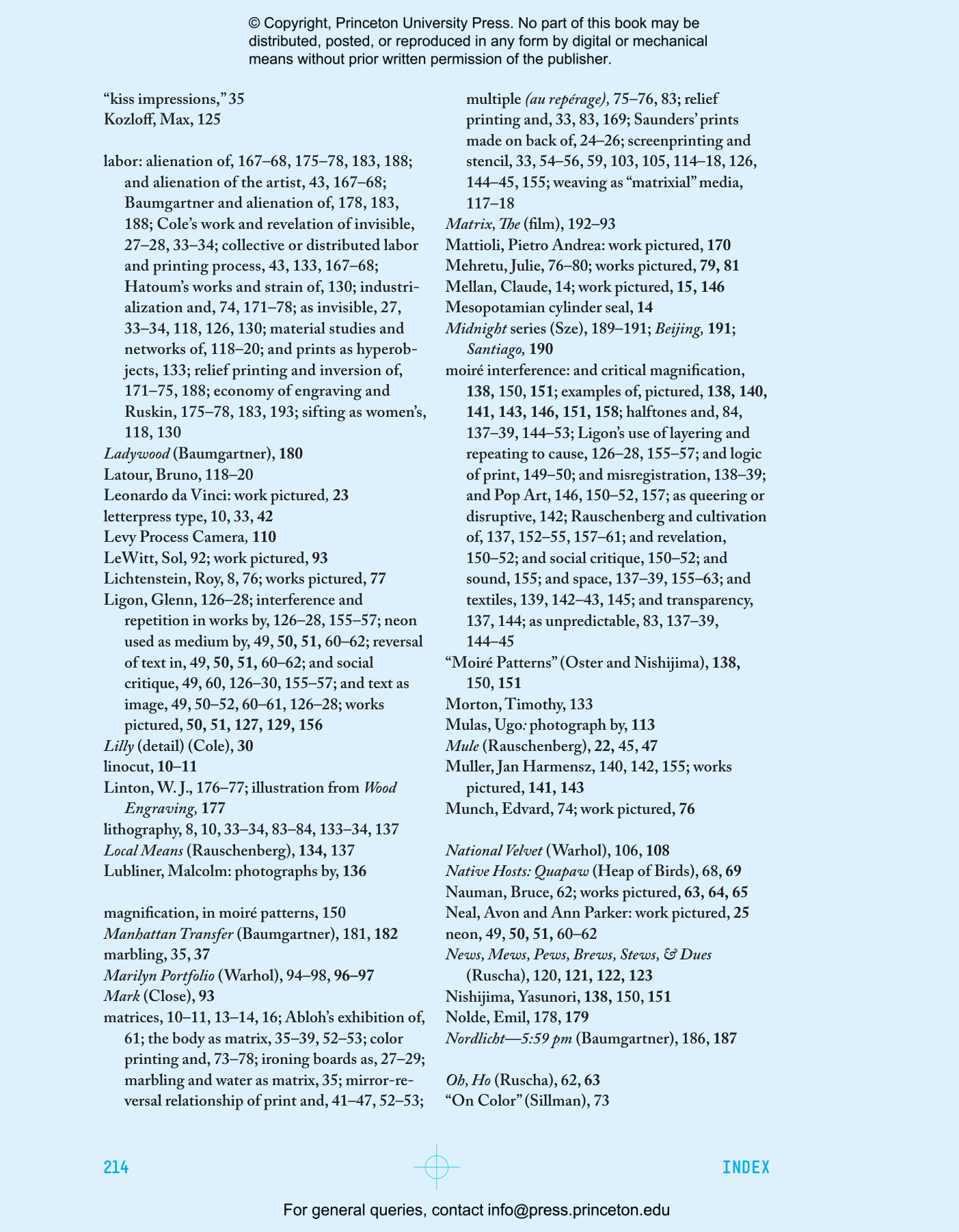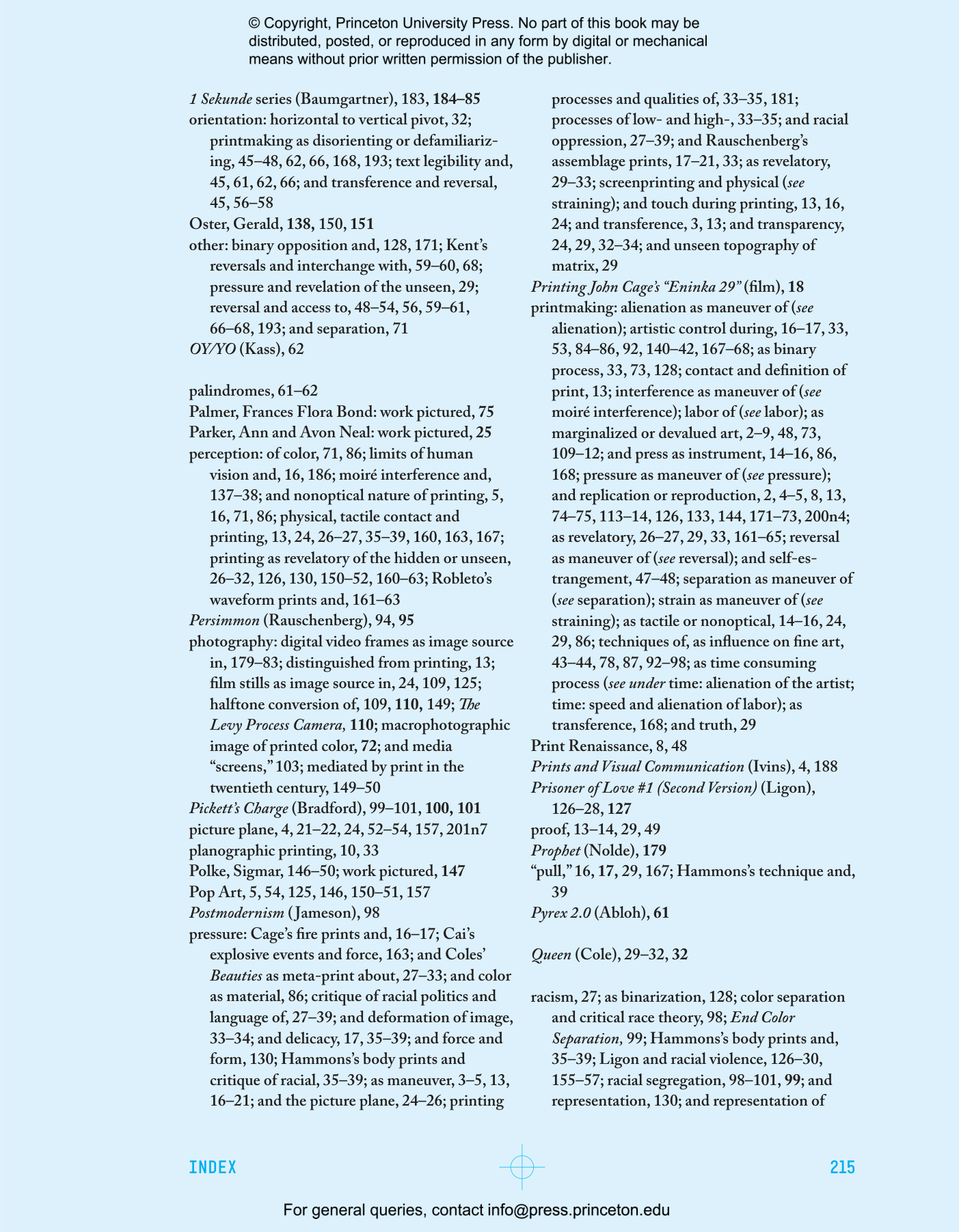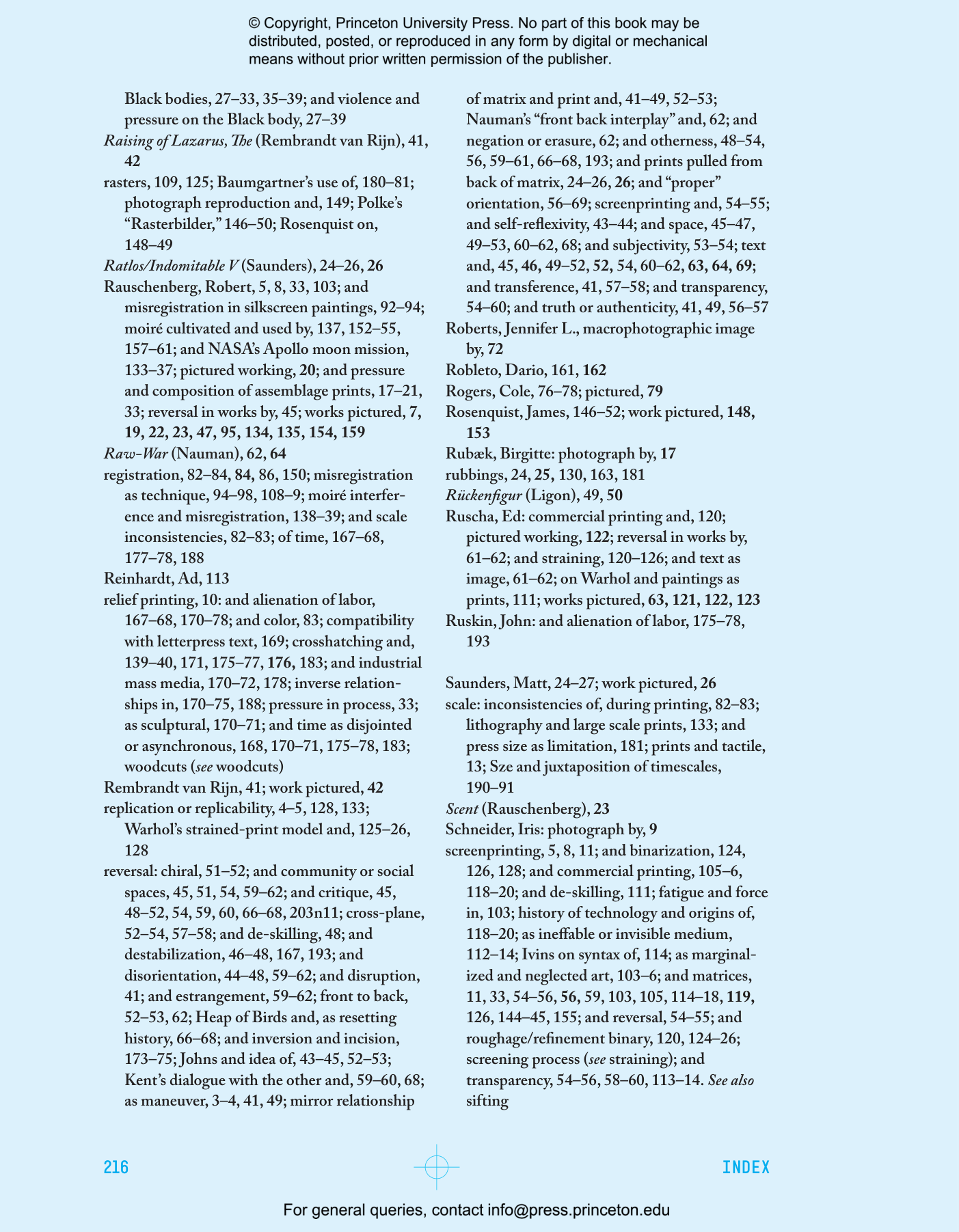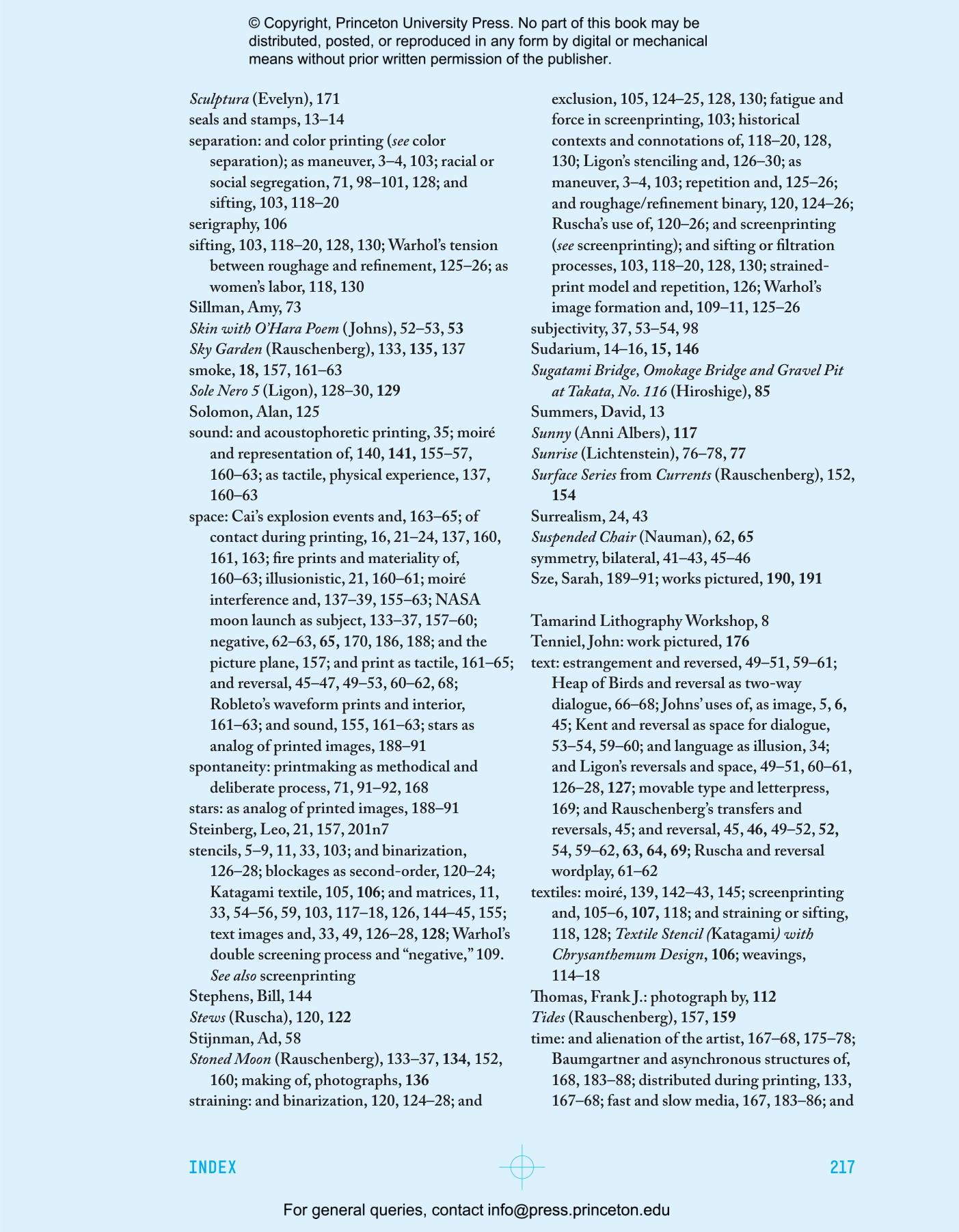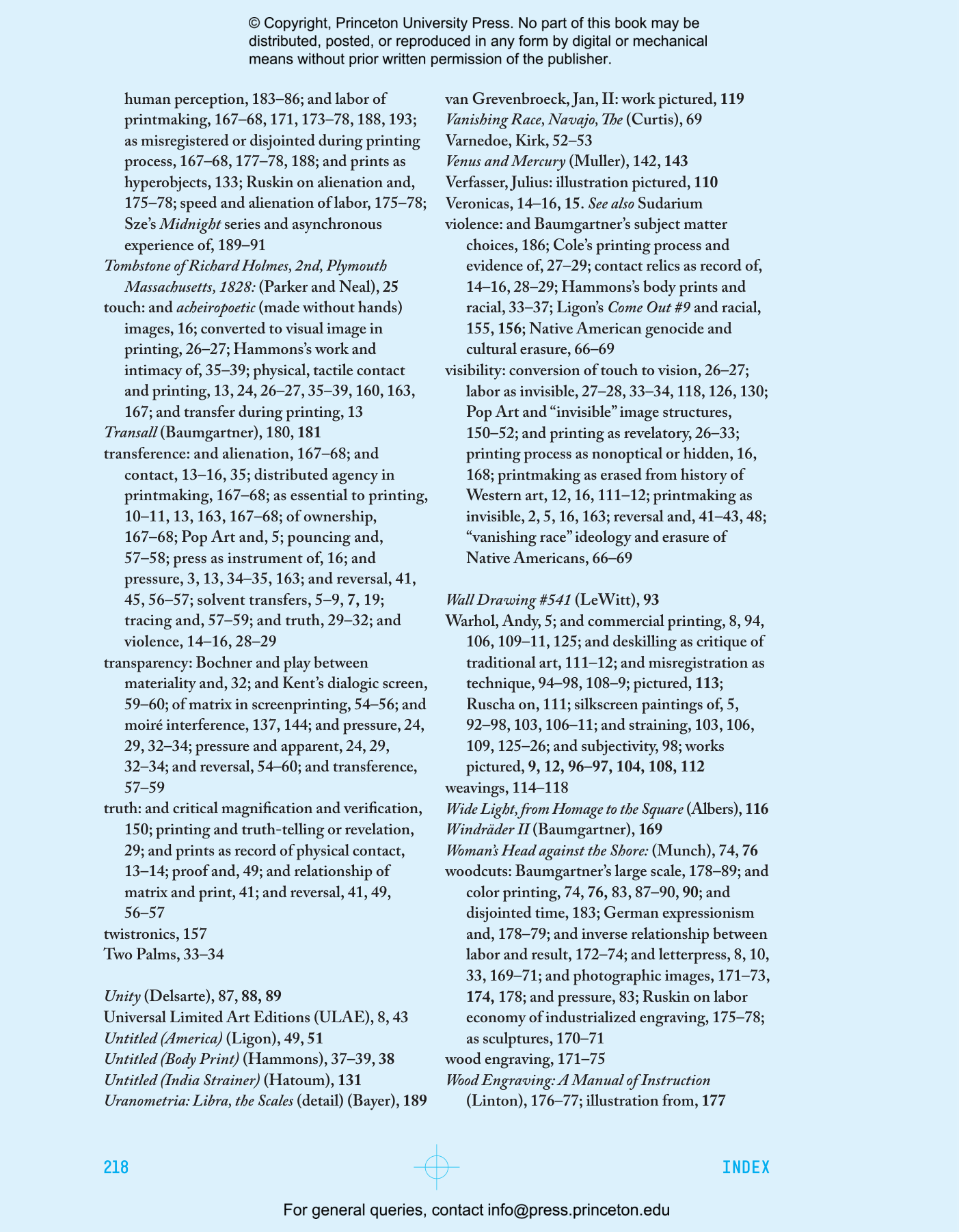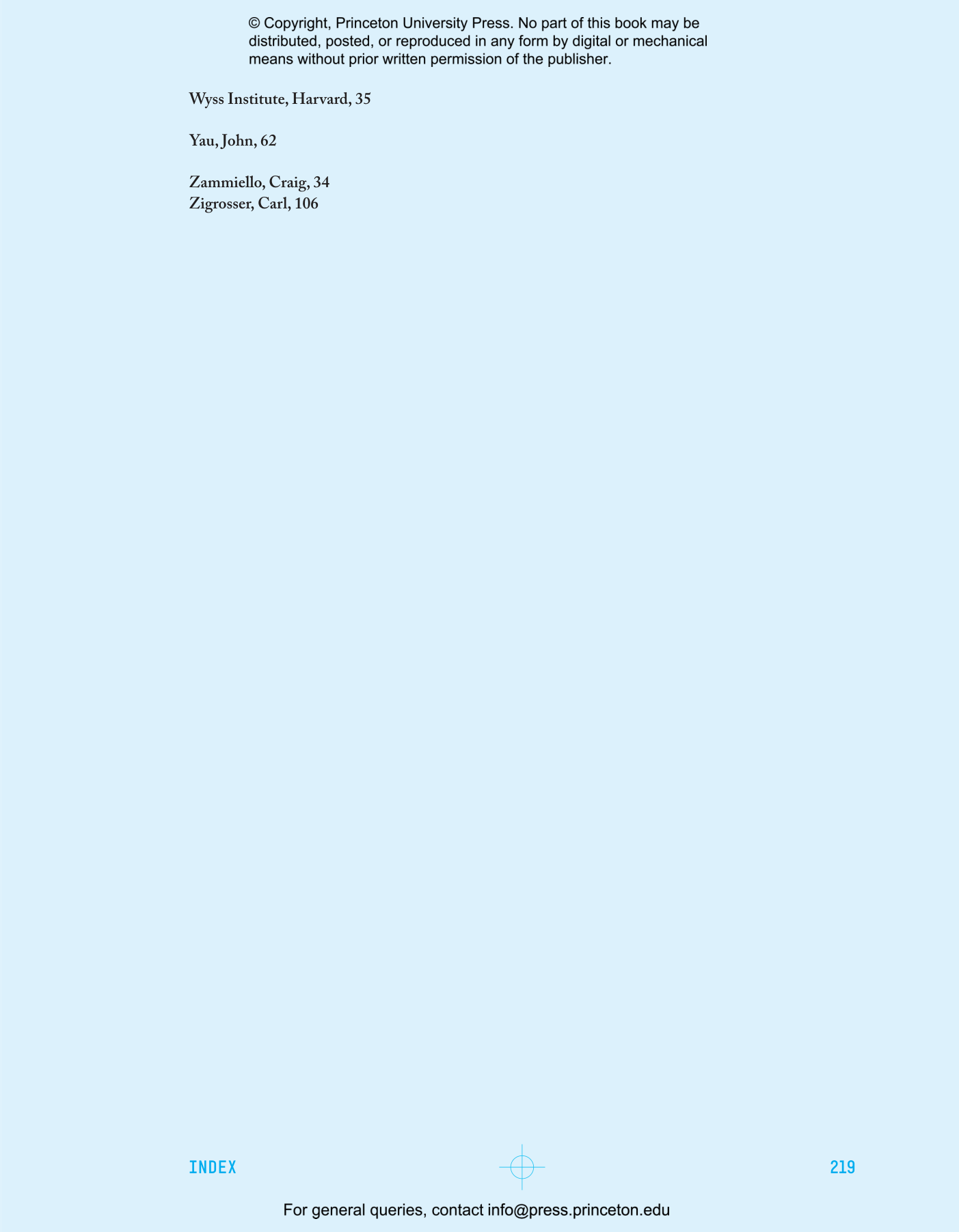In process and technique, printmaking is an art of physical contact. From woodcut and engraving to lithography and screenprinting, every print is the record of a contact event: the transfer of an image between surfaces, under pressure, followed by release. Contact reveals how the physical properties of print have their own poetics and politics and provides a new framework for understanding the intelligence and continuing relevance of printmaking today.
The seemingly simple physics of printmaking brings with it an array of metamorphoses that give expression to many of the social and conceptual concerns at the heart of modern and contemporary art. Exploring transformations such as reversal, separation, and interference, Jennifer Roberts explores these dynamics in the work of Christiane Baumgartner, David Hammons, Edgar Heap of Birds, Jasper Johns, Corita Kent, Glenn Ligon, Julie Mehretu, Robert Rauschenberg, and many other leading artists who work at the edge of the medium and beyond.
Focusing on the material and spatial transformations of the printmaking process rather than its reproducibility, this beautifully illustrated book explores the connections between print, painting, and sculpture, but also between the fine arts, industrial arts, decorative arts, and domestic arts. Throughout, Roberts asks what artists are learning from print, and what we, in turn, can learn from them.
Published in association with the Center for Advanced Study in the Visual Arts, National Gallery of Art, Washington
Jennifer L. Roberts is the Drew Gilpin Faust Professor of the Humanities at Harvard University. She is the author of Transporting Visions: The Movement of Images in Early America, Jasper Johns/In Press: The Crosshatch Works and the Logic of Print, and Mirror-Travels: Robert Smithson and History.
"Roberts deals expertly with the deeper meaning of making something meant to be made again. . . . Intellectually rich and provocative."—Murray Whyte, Harvard Magazine
"On every page of this book there is an idea with the potential to transform the reader’s perspective, not only on print, but also on culture more broadly. . . . In a burgeoning field of art-historical studies that take the fine-grained specifics of materiality as their focus, Contact is one of the most exciting contributions to date."—Christina J. Faraday, Apollo
"[Roberts] redeems a process we dismiss too breezily. . . . A chronicle of creativity as well as a redemption of printmaking."—Jeannette Cooperman, Common Reader
"An articulate, creative exploration of this unique artist–medium relationship."—Choice
"[Contact] offers a fresh perspective on printmaking, synthesizing simple maneuvers like reversal and pressure to account for the medium’s expansive influence. . . . The book is both conversational and accessible. . . . A must read. . . . Contact introduces a new way of thinking about print."—Ann Shafer, Platemark Podcast
“One of the most exhilarating studies I’ve ever encountered about how art works and exactly what it’s made of.”—Amy Sillman, visual artist
“Roberts offers one dizzying, destabilizing reframing of printing after another—a new detonation on every page, boom boom boom.”—Robin Sloan, author of Mr. Penumbra’s 24-Hour Bookstore
“Contact presents a fresh contemporary perspective on printmaking and offers a deep dive into the implications and significance of what it involves. Roberts makes a strong case for this process as a fine art form while presenting it in a clear, understandable manner. Students of all disciplines will find this book a valuable resource on both the practical and theoretical steps of making a print.”—Craig Zammiello, master printer at Two Palms
“With Contact, Jennifer Roberts initiates a bold new era of art history, establishing print as a scholarly pursuit inseparable from the pursuit of knowledge. She breaks out of the echo chamber of traditional print scholarship by deciphering the techniques’ most salient operations, demonstrating how the intelligence of print has shaped the way so many artists think and informed their production in other mediums. Her keen analytic eye and poetic imagination narrates the physical and psychic maneuvers of printmaking in ways that will draw new enthusiasts, as well as enlighten those of us already immersed in the technologies and their history.”—Susan Dackerman, author and editor of Prints and the Pursuit of Knowledge in Early Modern Europe
